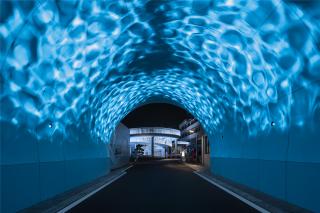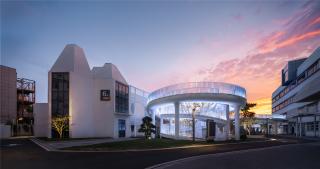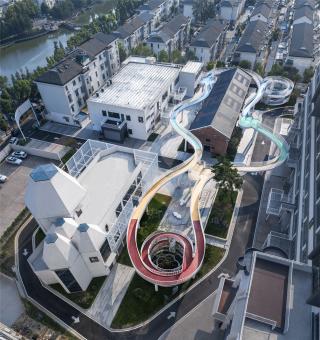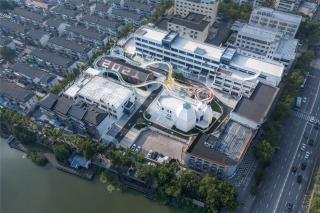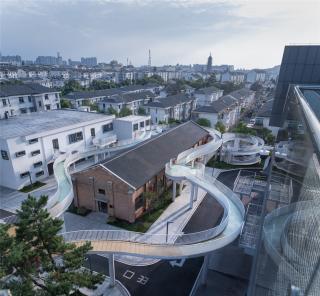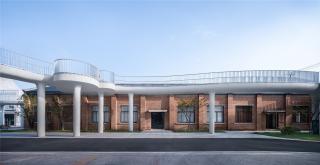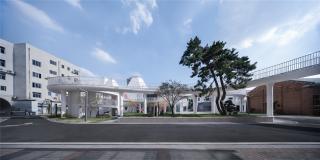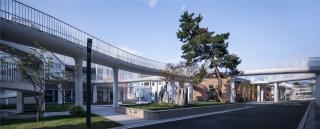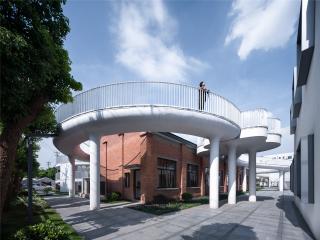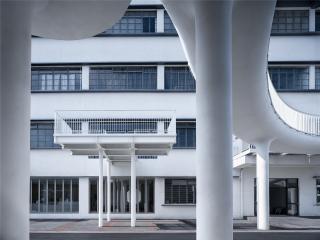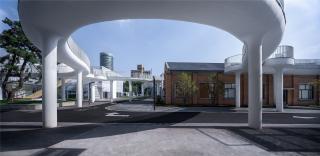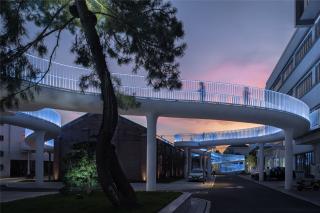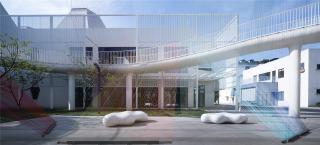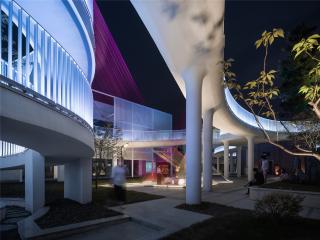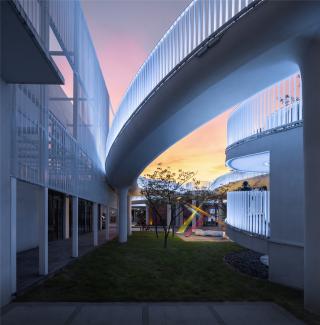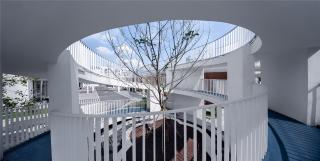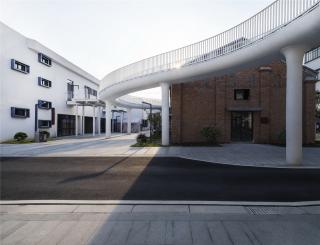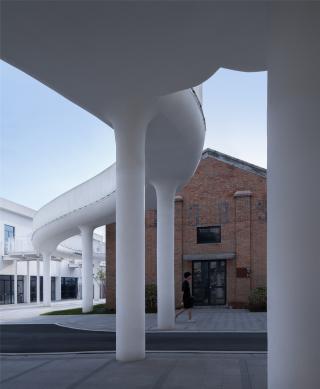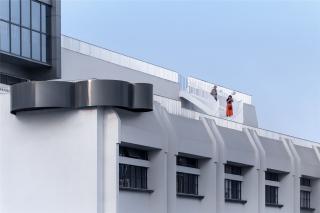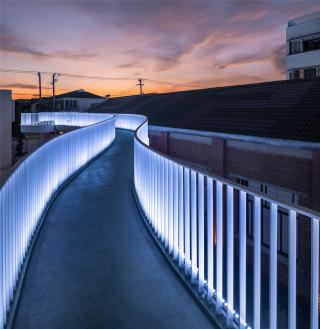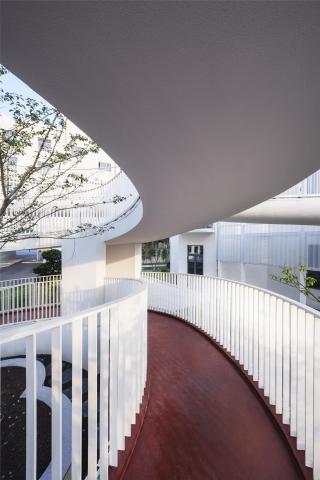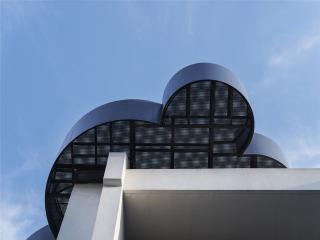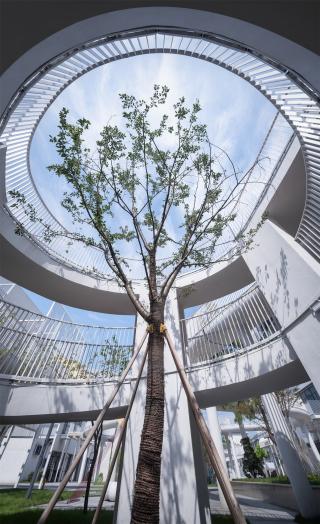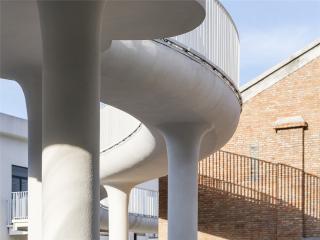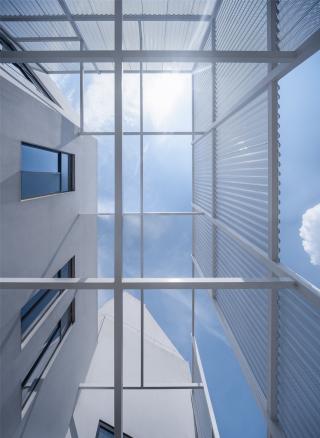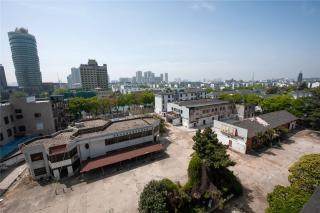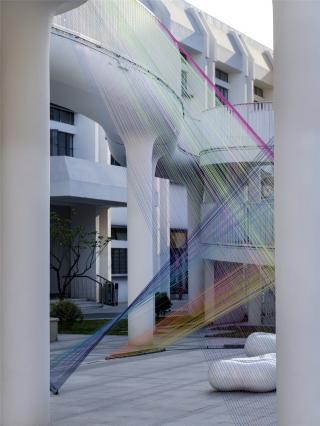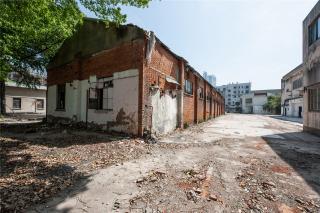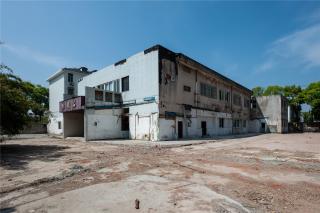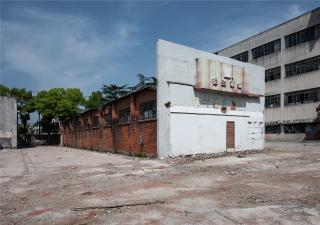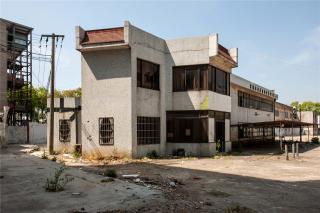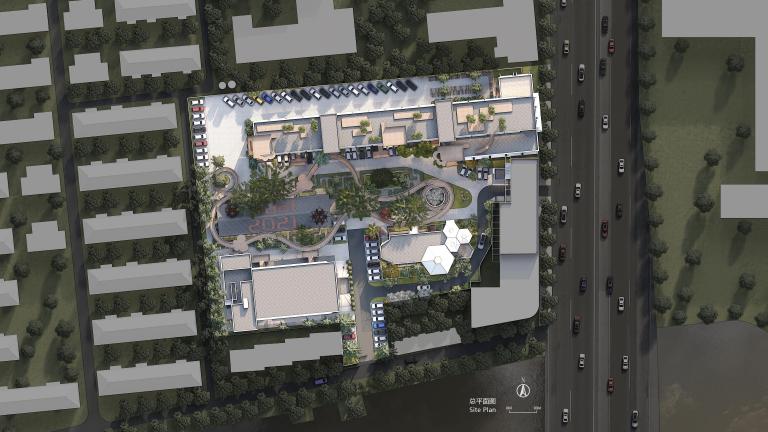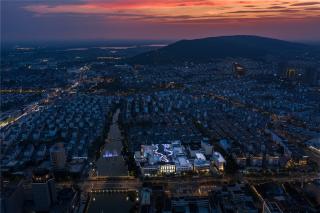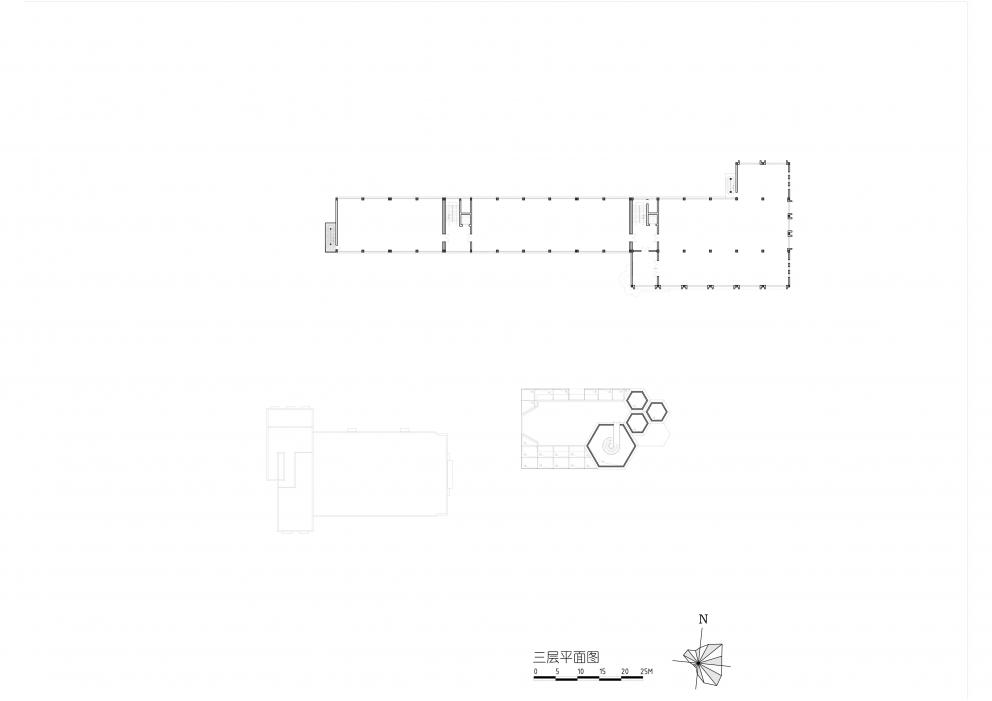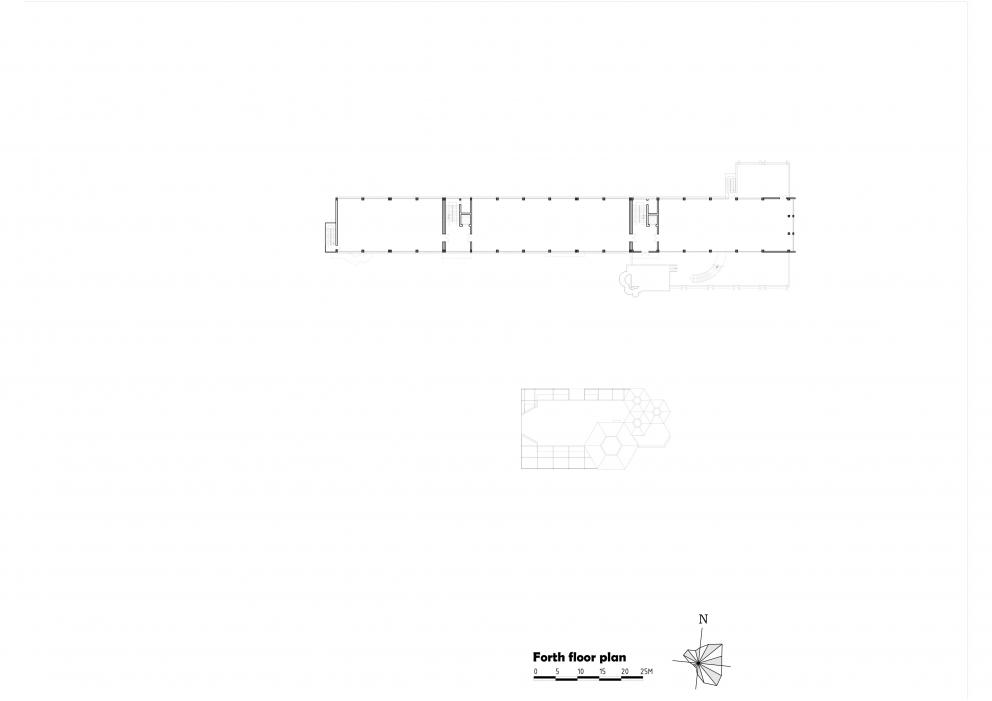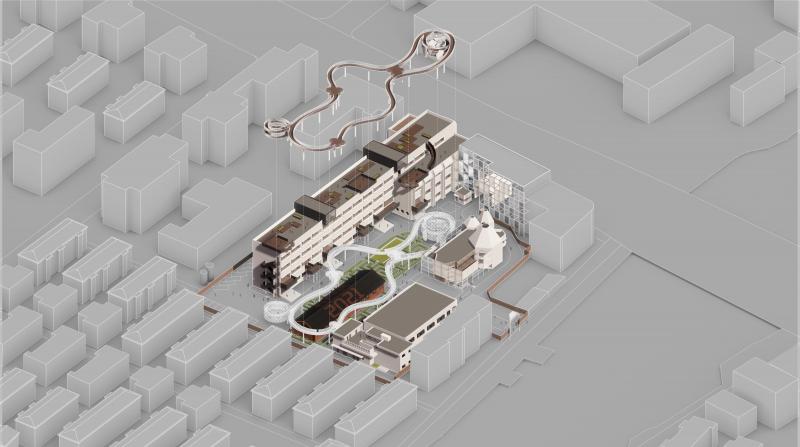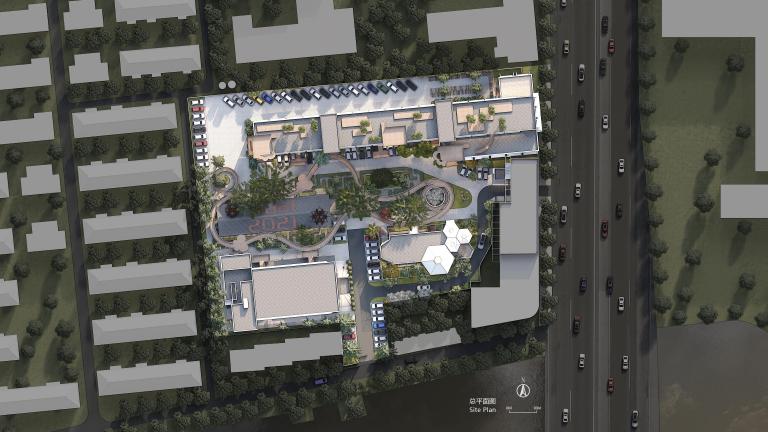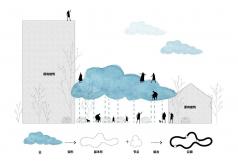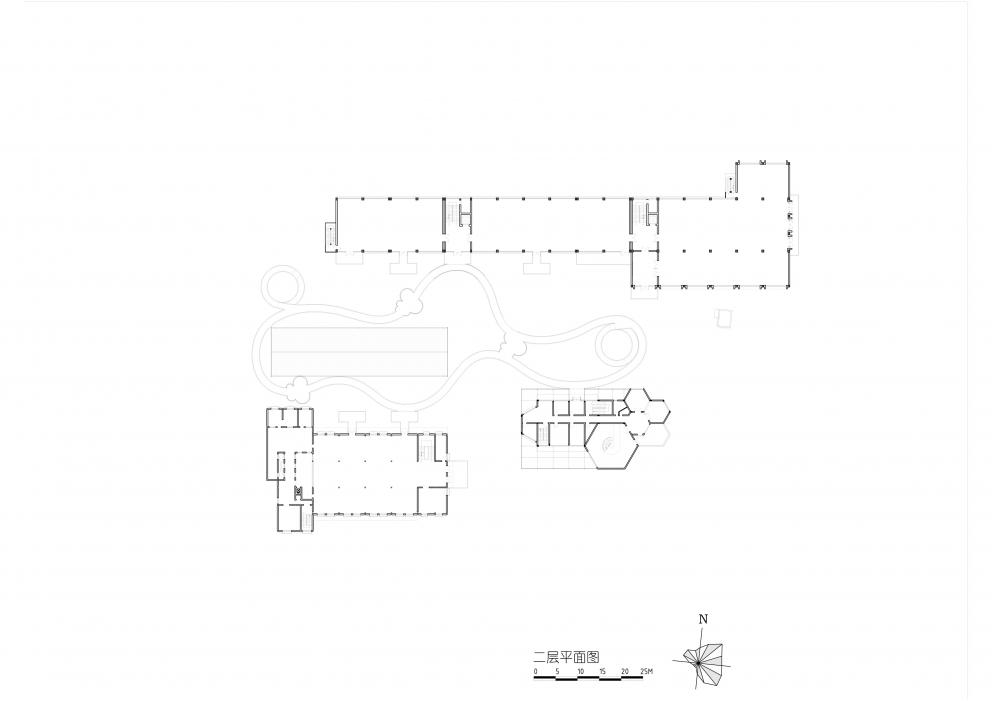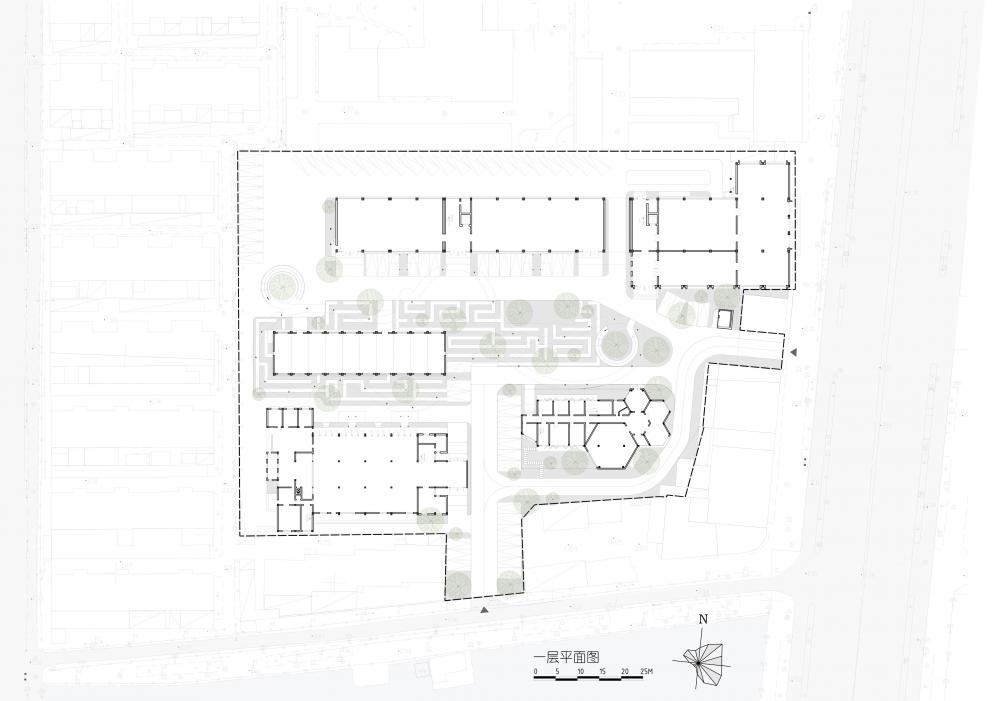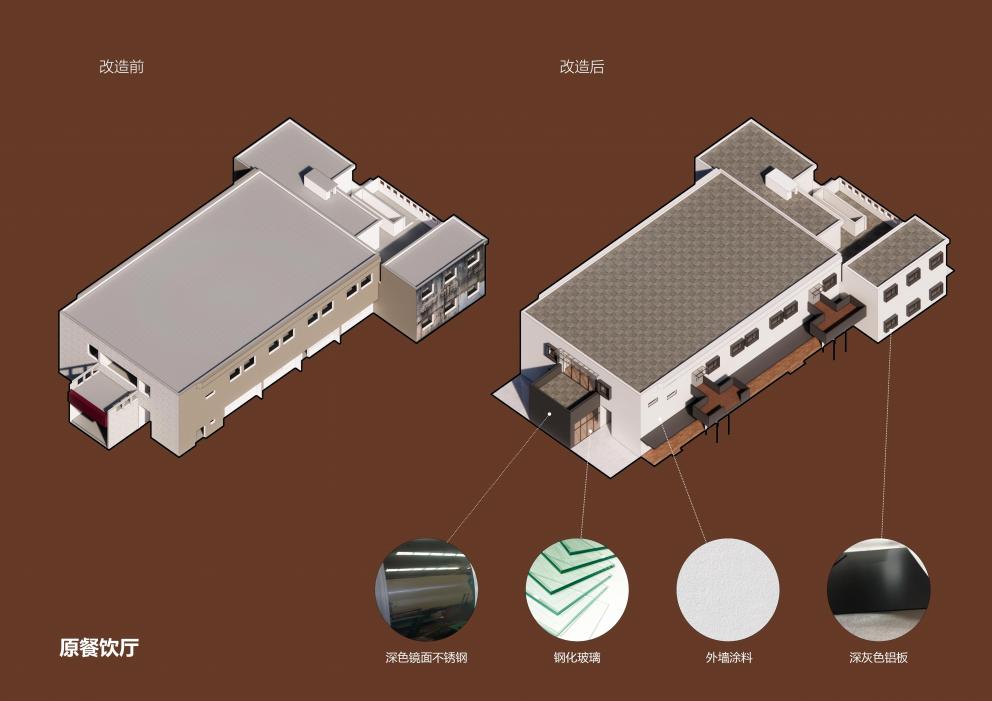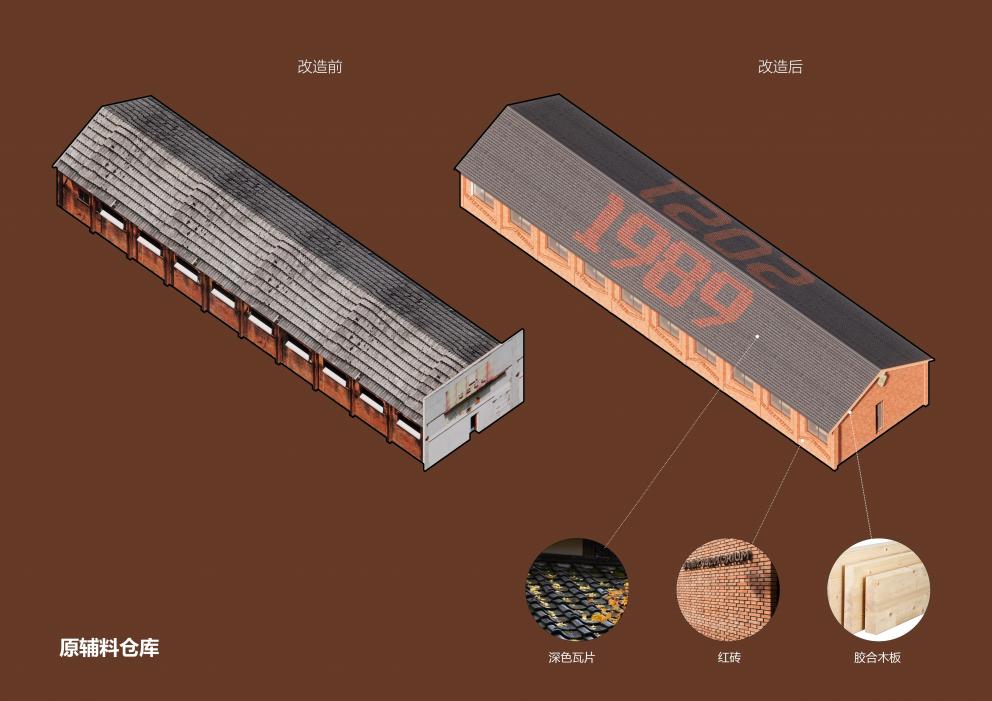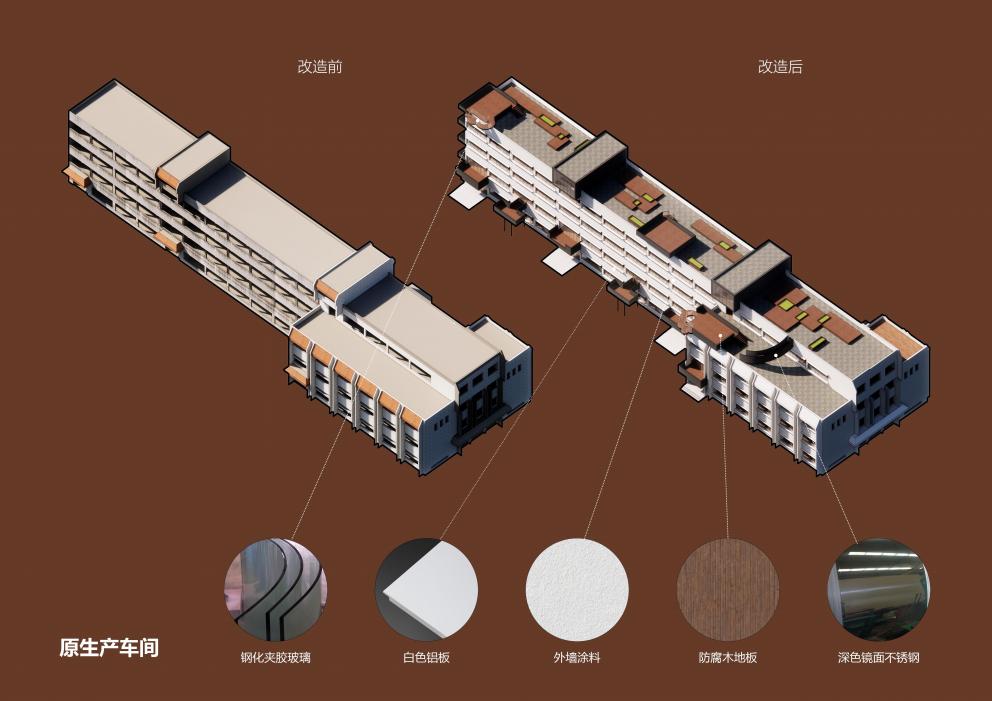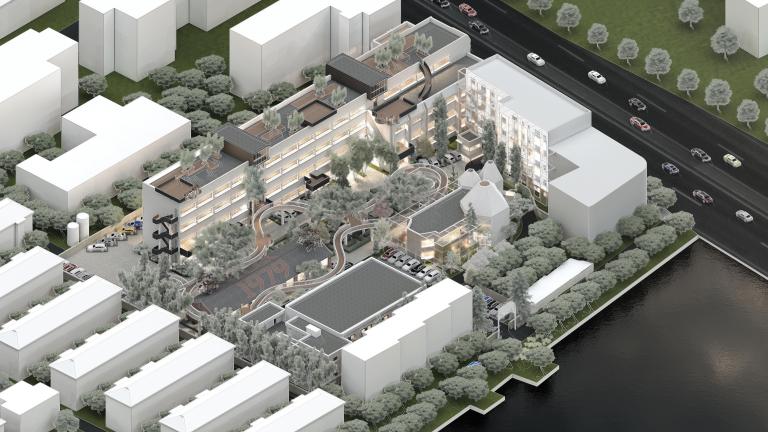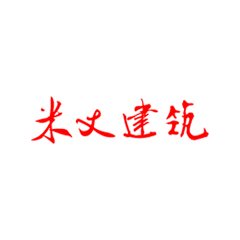▼鳥(niǎo)瞰圖 ?吳清山
Overall ariea view after reconstruction ? Wu Qingshan
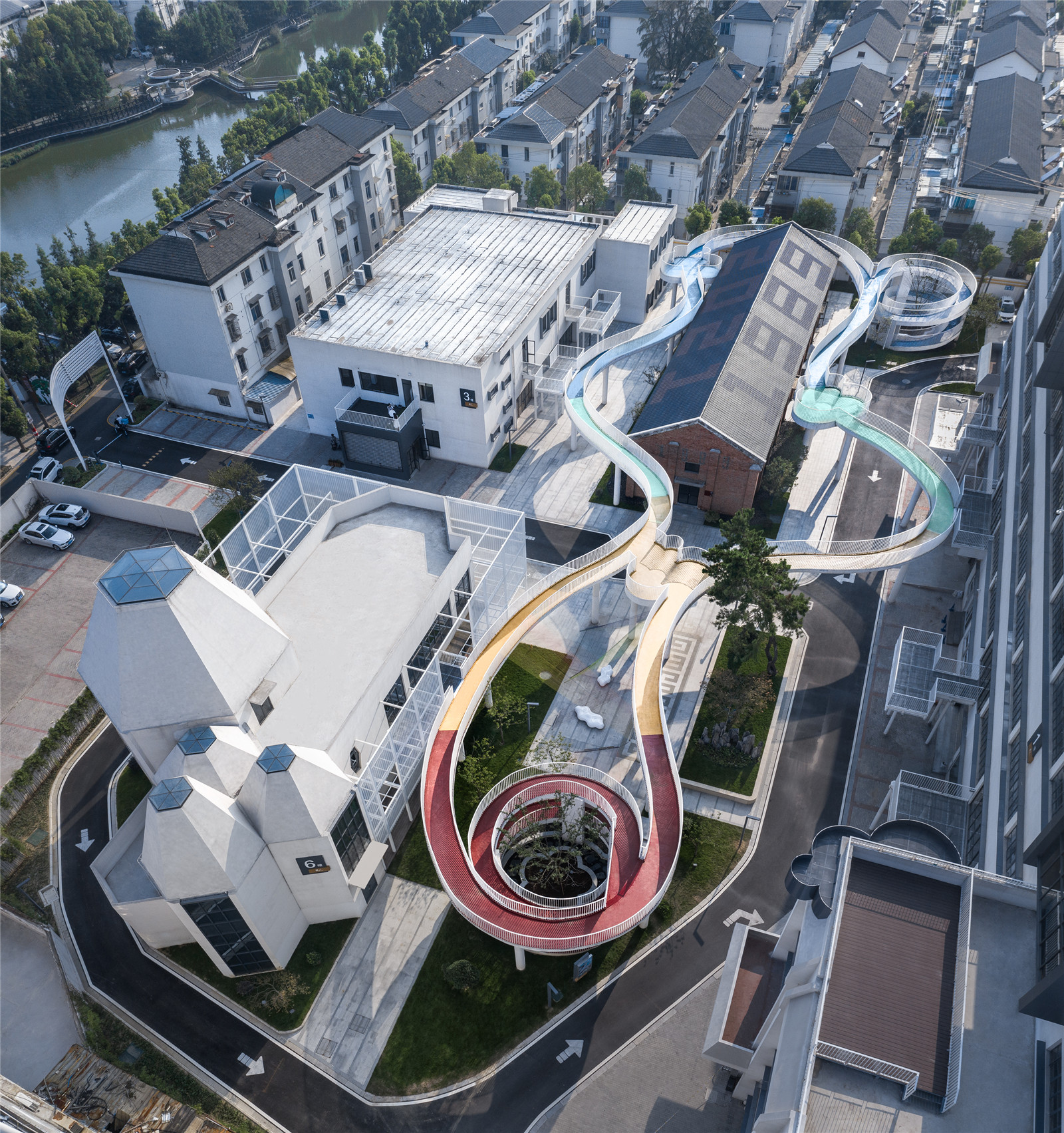
▼云間彩虹 ?吳清山
Rainbow among clouds ?Wu Qingshan
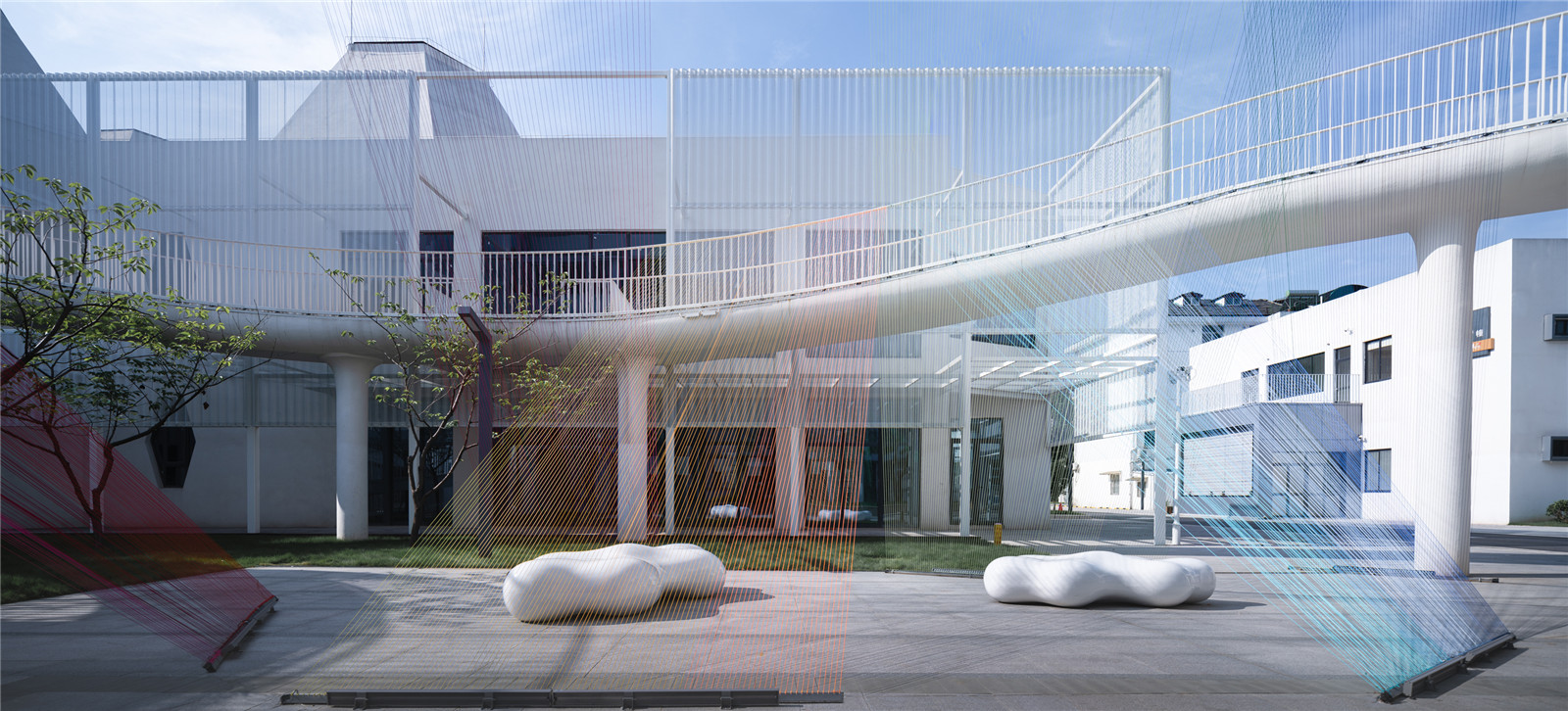
常熟作為中國(guó)重要的輕紡工業(yè)集聚中心,在城市的發(fā)展過(guò)程中����,以紡織業(yè)生產(chǎn)場(chǎng)所為代表的輕工業(yè)廠房��,成為了城市中重要的建筑類型。常熟繡衣廠成立于1979年�,1989年整體搬遷至海虞南路77號(hào),開(kāi)始了一段在城市中心區(qū)域的輝煌時(shí)光�����。隨著中國(guó)社會(huì)的快速發(fā)展�,生產(chǎn)讓位于消費(fèi),產(chǎn)業(yè)和城市都在幾十年內(nèi)發(fā)生了天翻地覆的變化��,從而引發(fā)了城市建筑功能的徹底轉(zhuǎn)變�����。因得益于特殊的地段優(yōu)勢(shì)��,繡衣廠的運(yùn)營(yíng)模式由生產(chǎn)經(jīng)營(yíng)逐漸轉(zhuǎn)變?yōu)榱藦S房建筑出租���,建筑得以持續(xù)高頻率使用�����。但伴隨著被過(guò)度使用而造成了建筑破損��、基礎(chǔ)設(shè)施老舊����,使建筑群逐漸成為繁華市中心的負(fù)面空間。2019年����,常熟江南集團(tuán)在現(xiàn)有基礎(chǔ)上開(kāi)始改造整修���,以期重新喚醒她的活力與價(jià)值�。
Changshu is a vital textile industry gathering centre in China. In the city development process, textile workshop, represented by textile manufacturing sites, becomes the essential architectural type in the city. Changshu embroidered garment factory founded in 1979. It entirely moved to Haiyu South Road No.77 and started a glorious time in the city centre. With the rapid development of Chinese society, giving way to consumption, earth-shaking changes have taken place in industries and cities over the past few decades, which have led to the complete transformation of urban-architecture functions. Benefiting from the particular location advantages, the operation mode of the Jiangnan embroidery garment factory has gradually changed from production management to building rental, and the buildings have been used continuously and frequently. However, with the excessive use, the buildings are damaged and the infrastructure is old, which makes the buildings gradually become a negative space in the downtown. In 2019, Changshu Jiangnan Group started the transformation and renovation on the factory's existing basis to awaken its vitality and value.
▼改造前鳥(niǎo)瞰
Aerial view before reconstruction

▼改造后鳥(niǎo)瞰 ?吳清山
Overall ariea view after reconstruction ? Wu Qingshan
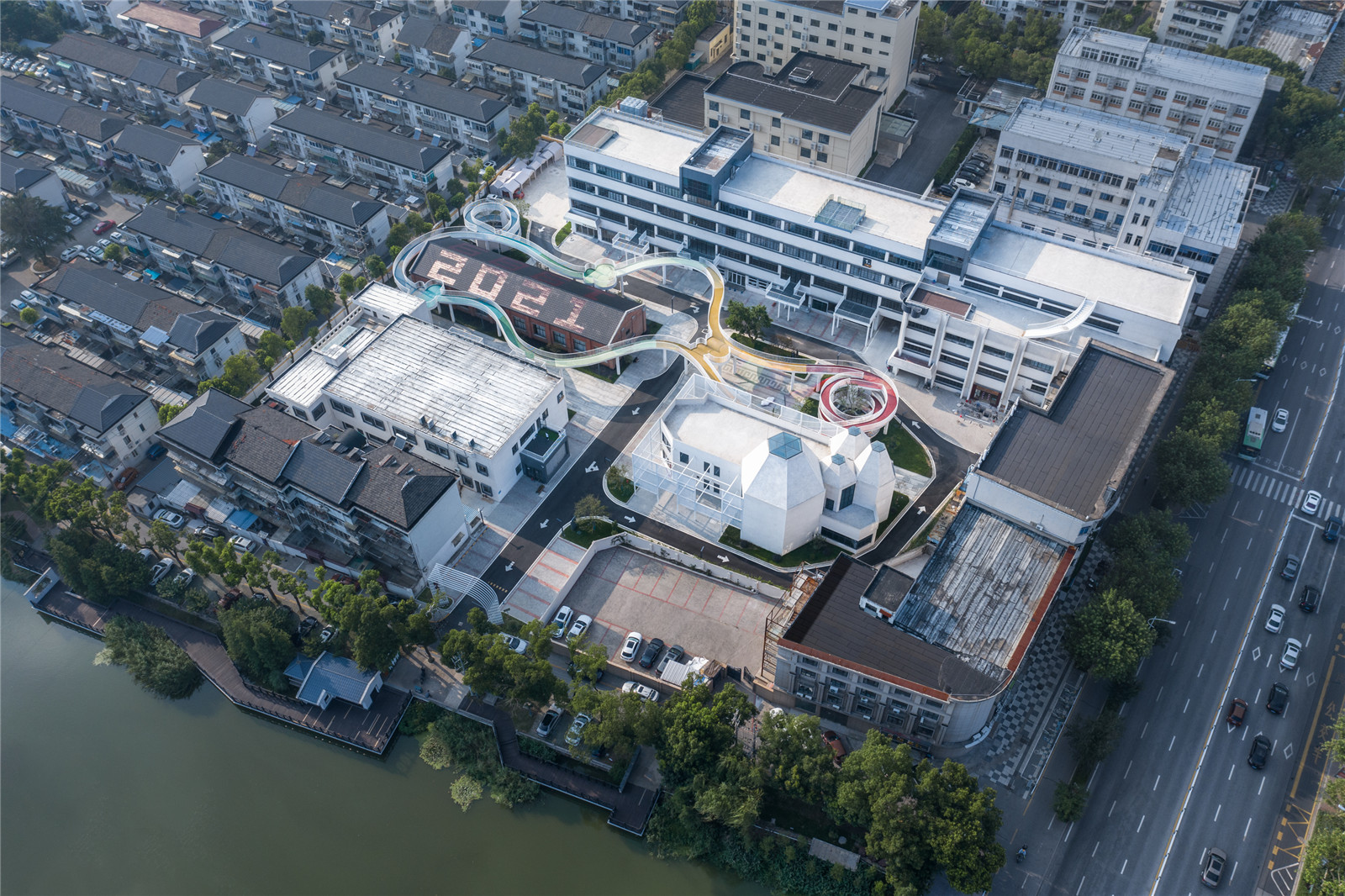
▼總體軸側(cè)
Axonometric?MINAX
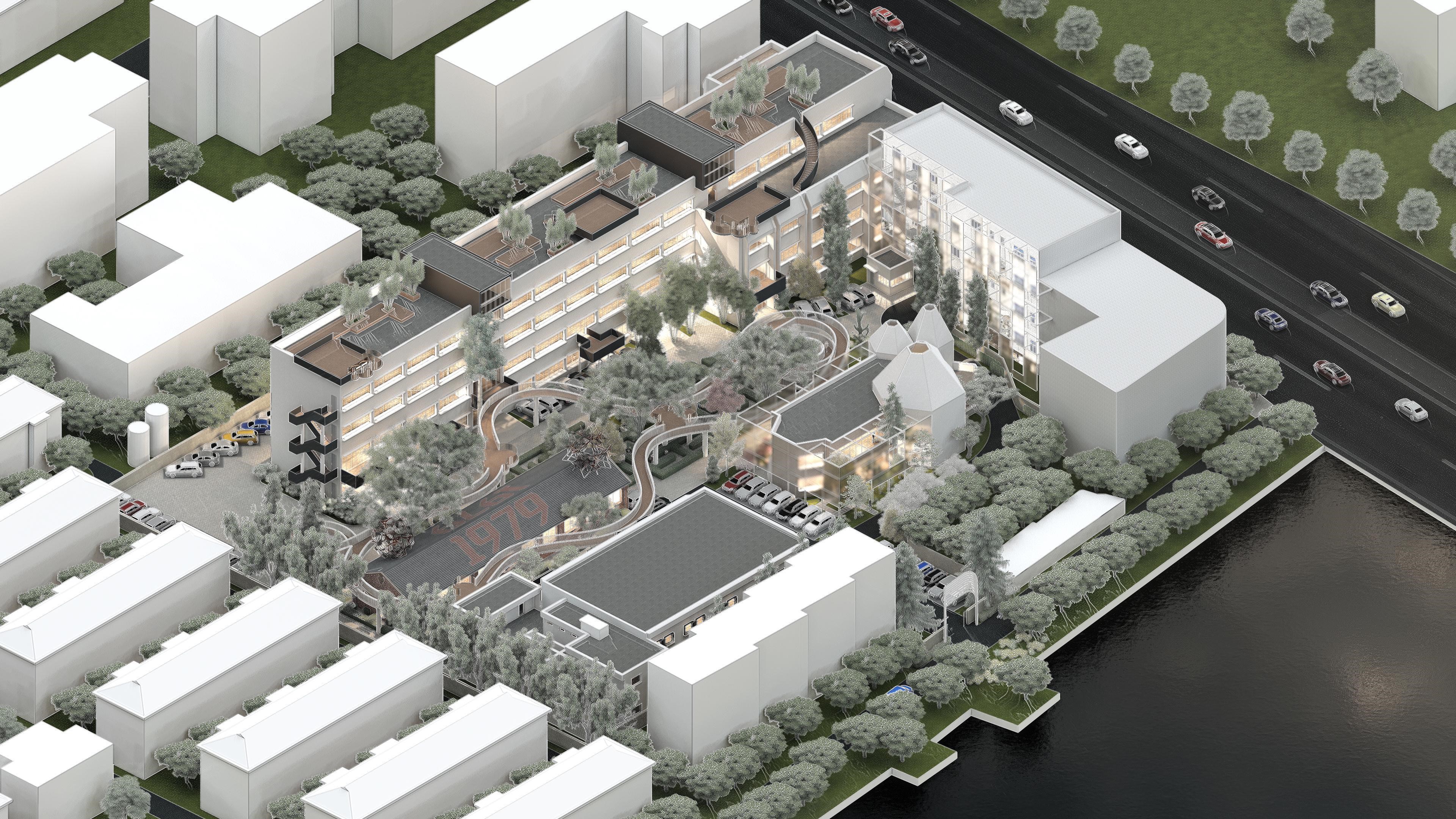
項(xiàng)目由四幢多層建筑構(gòu)成��,占地面積為10000平方米��,總建筑面積為9726平方米��。經(jīng)過(guò)設(shè)計(jì)團(tuán)隊(duì)仔細(xì)的現(xiàn)場(chǎng)勘查與分析后��,秉持著充分尊重歷史和現(xiàn)狀的態(tài)度���,僅拆除并重建一棟破損嚴(yán)重���、已為危房的磚結(jié)構(gòu)原輔料用房,其余的生產(chǎn)車(chē)間���、辦公樓���、餐飲廳皆在保留其原有結(jié)構(gòu)基礎(chǔ)上進(jìn)行局部加固����。但如何能在老建筑中植入新的使用功能����,從而塑造出新的富有活力的使用場(chǎng)景和形象,成為本次改造提升的重點(diǎn)�。特別是對(duì)于這樣一個(gè)城市核心地域的建筑群體來(lái)說(shuō),不僅要保持城市記憶�����,還要適應(yīng)時(shí)代有新的發(fā)展需求�。在舊改的過(guò)程中,必須加入創(chuàng)新的元素����,從而實(shí)現(xiàn)一種可持續(xù)的有機(jī)變化。這種變化不是依靠新對(duì)舊的覆蓋���,而是將這種歷史的關(guān)系在時(shí)間的維度上并置起來(lái)��,形成既能滿足城市新功能的要求��,又能留下銘刻發(fā)展的清晰痕跡��。
The project comprises four multistory buildings, covering an area of 10000 square meters and a total construction area of 9726 square meters. After careful on-site investigation and analysis, the design team upholds the attitude of fully respecting the history and current situation, and only demolished and rebuilt one brick structure raw auxiliary building that is seriously damaged and has become a dangerous building. The rest of the production workshop, office building and restaurants have been partially reinforced to retain their original structure. However, implanting new using functions to the old building to create new dynamic use scenarios and images has become the focus of this transformation and improvement. Especially for such a building group in the core area of the city, it is necessary not only to maintain the city's memory but also to adapt to the new development needs of the times. Therefore, innovative elements must be added in the process of renovation to realize a sustainable organic change. This change does not rely on new things to cover the old. Still, it juxtaposes this historical relationship in the dimension of time, which can not only meet the requirements of new urban functions but also leave a clear trace of recorded development.
▼改造前建筑
Building before reconstruction
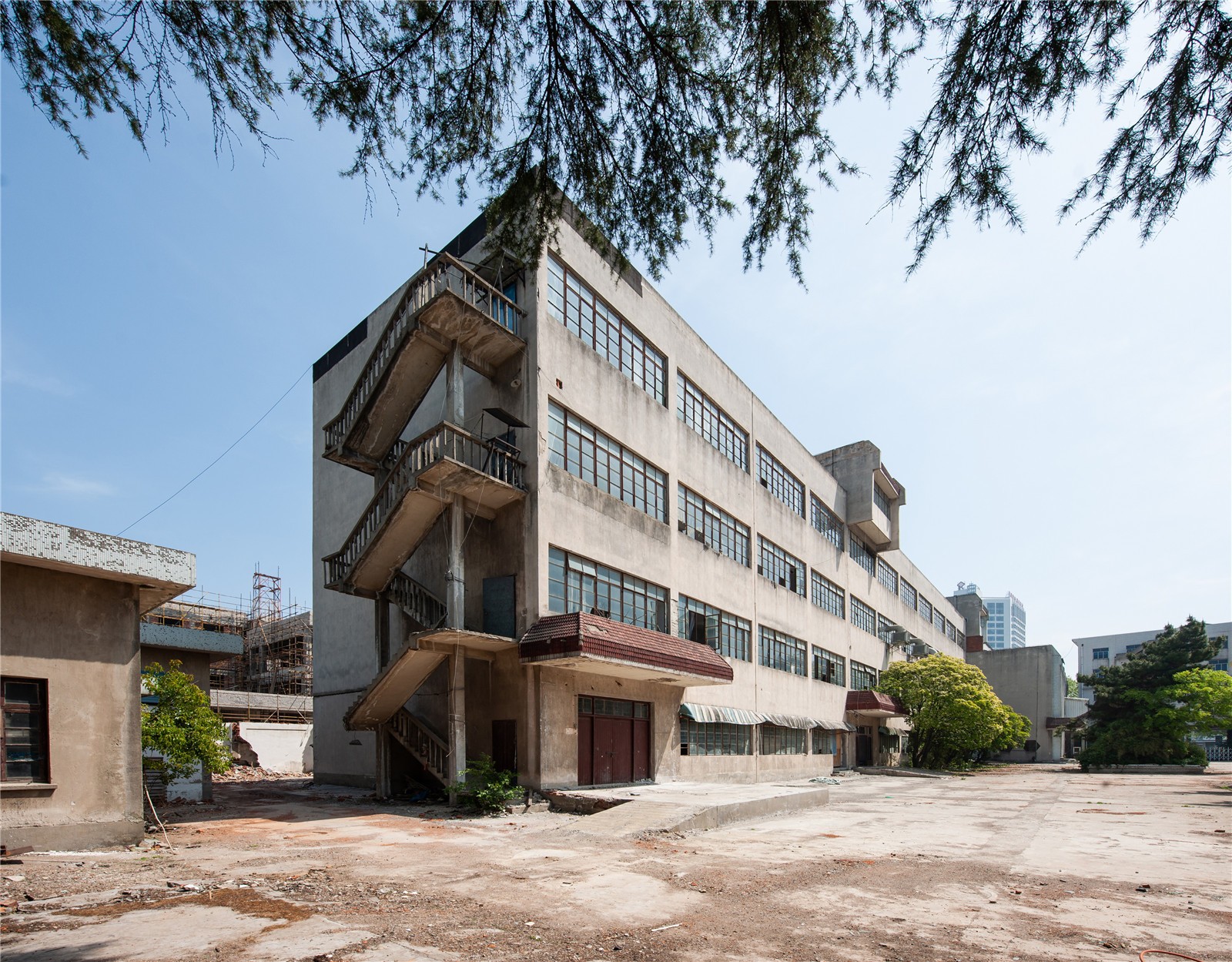
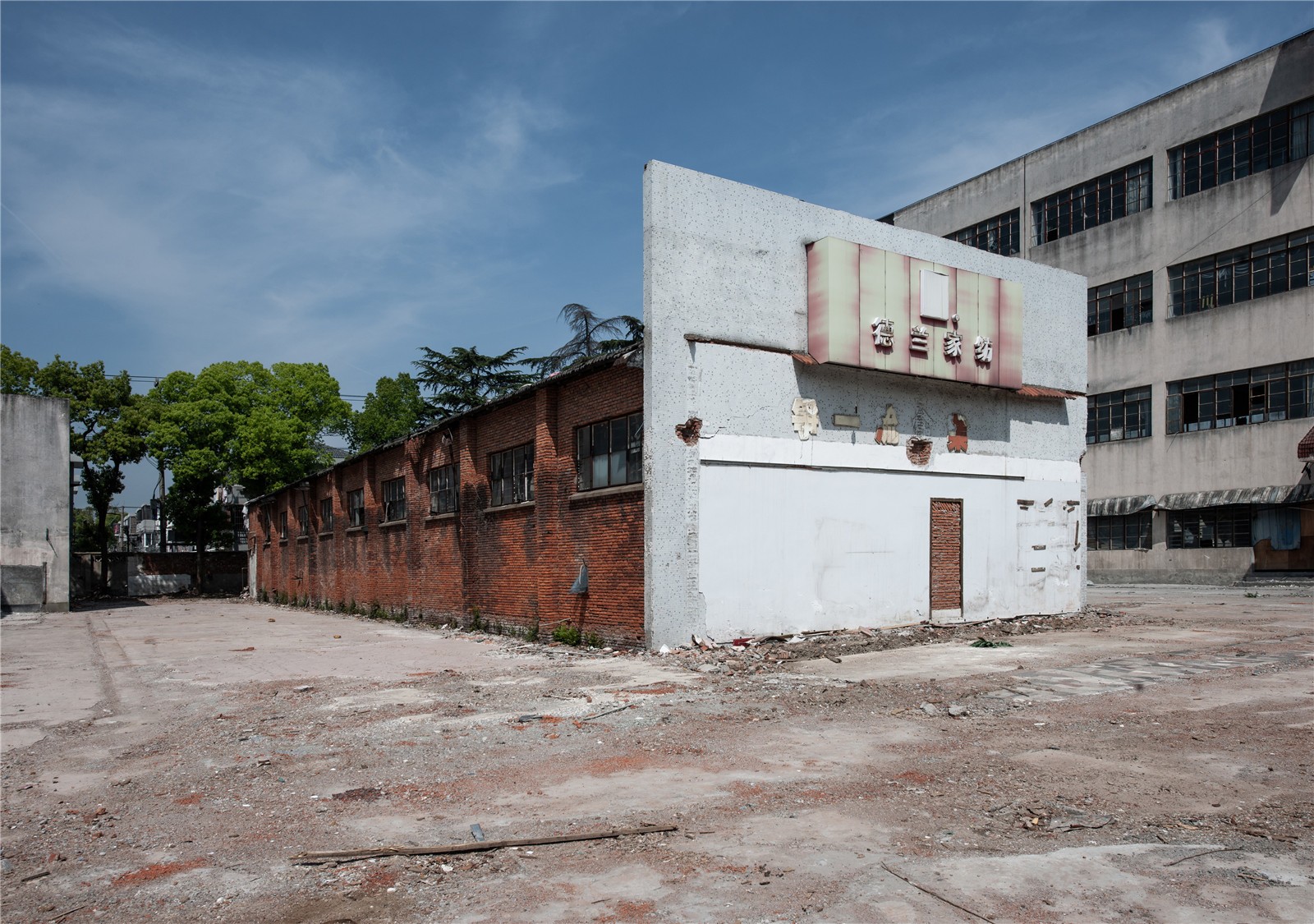

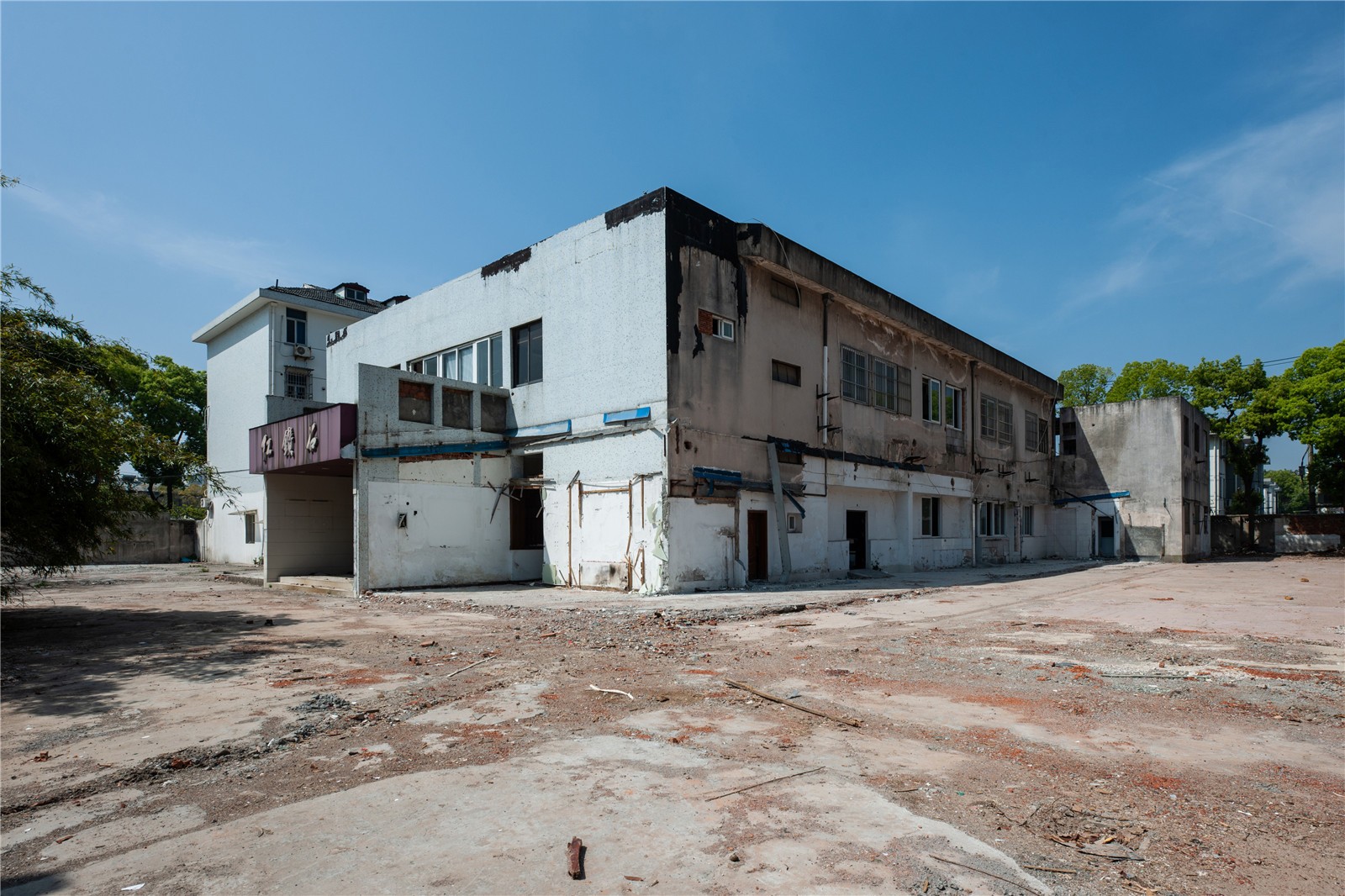
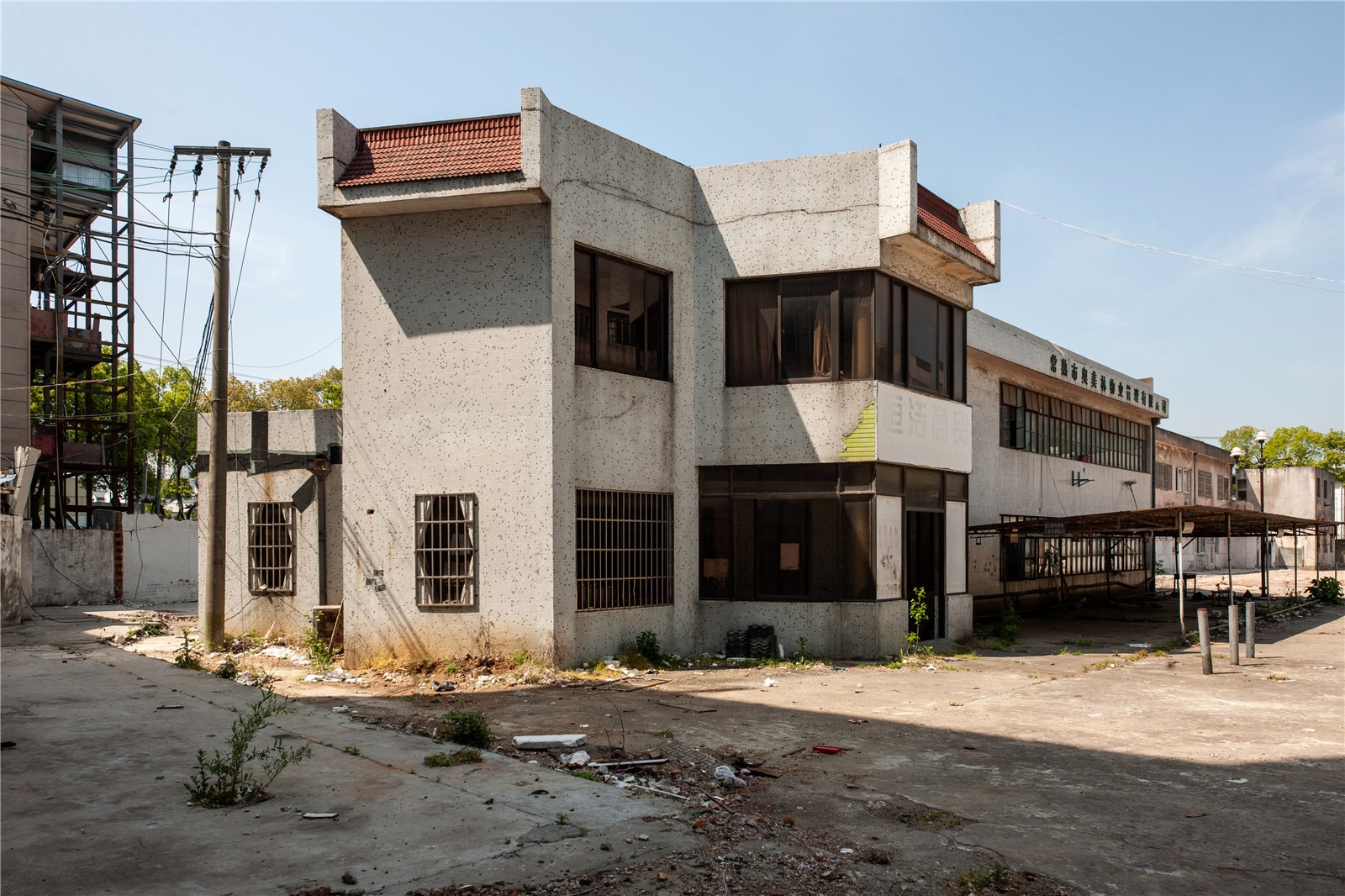
▼改造后建筑鳥(niǎo)瞰 ?吳清山
Ariea view of the building ? Wu Qingshan
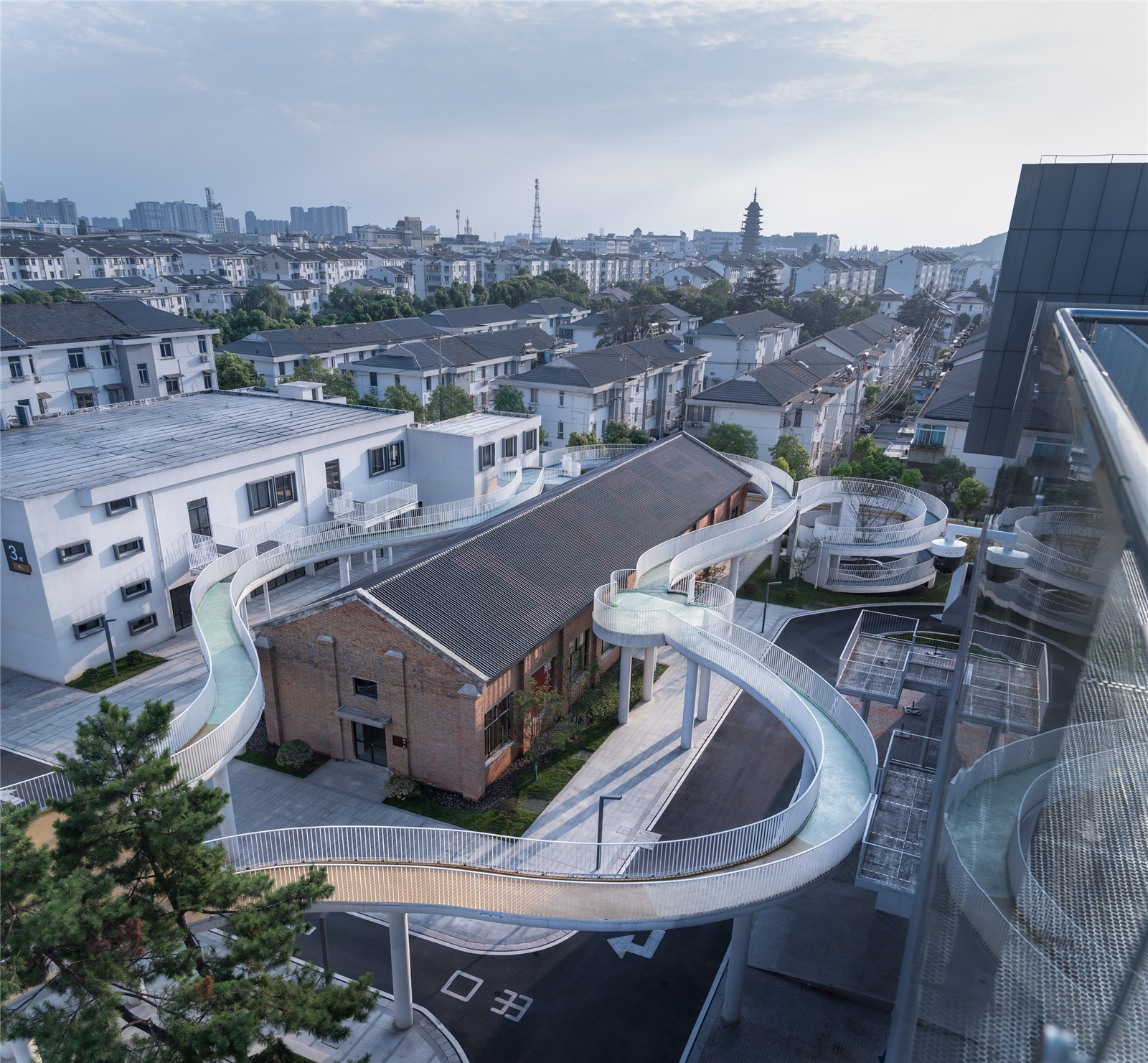
通過(guò)對(duì)原有建筑相互關(guān)系及未來(lái)功能的分析�,這些差異性巨大、性格各異的建筑間需要形成有機(jī)的生態(tài)��,建筑和場(chǎng)地間感受屬性需要由原來(lái)的單一體驗(yàn)轉(zhuǎn)變成具有記憶性的復(fù)合感知�,這就要求場(chǎng)所中需要介入有強(qiáng)有力的創(chuàng)新元素��。這種新的元素在介入的過(guò)程中�,一方面保持場(chǎng)所記憶,另一方面給原有秩序帶來(lái)全新的沖擊�����,從而發(fā)出應(yīng)對(duì)當(dāng)下生活的回音�,能夠讓項(xiàng)目在更長(zhǎng)的時(shí)間軸上疊現(xiàn)光陰的厚度。
By analyzing the relationship between the original buildings and their future functions, these buildings with huge differences and different personalities need to form an organic ecology. The feeling attribute between buildings and sites needs to be transformed from the original single experience into a composite perception with memory, which requires strong innovative elements to be involved in the sites. On the one hand, in the process of intervention, this new element maintains the memory of the place. On the other hand, it brings a brand-new impact on the original order to send an echo to deal with the current life, which can make the project show the thickness of time on a longer time axis.
▼現(xiàn)狀分析
Condition Analysis?MINAX
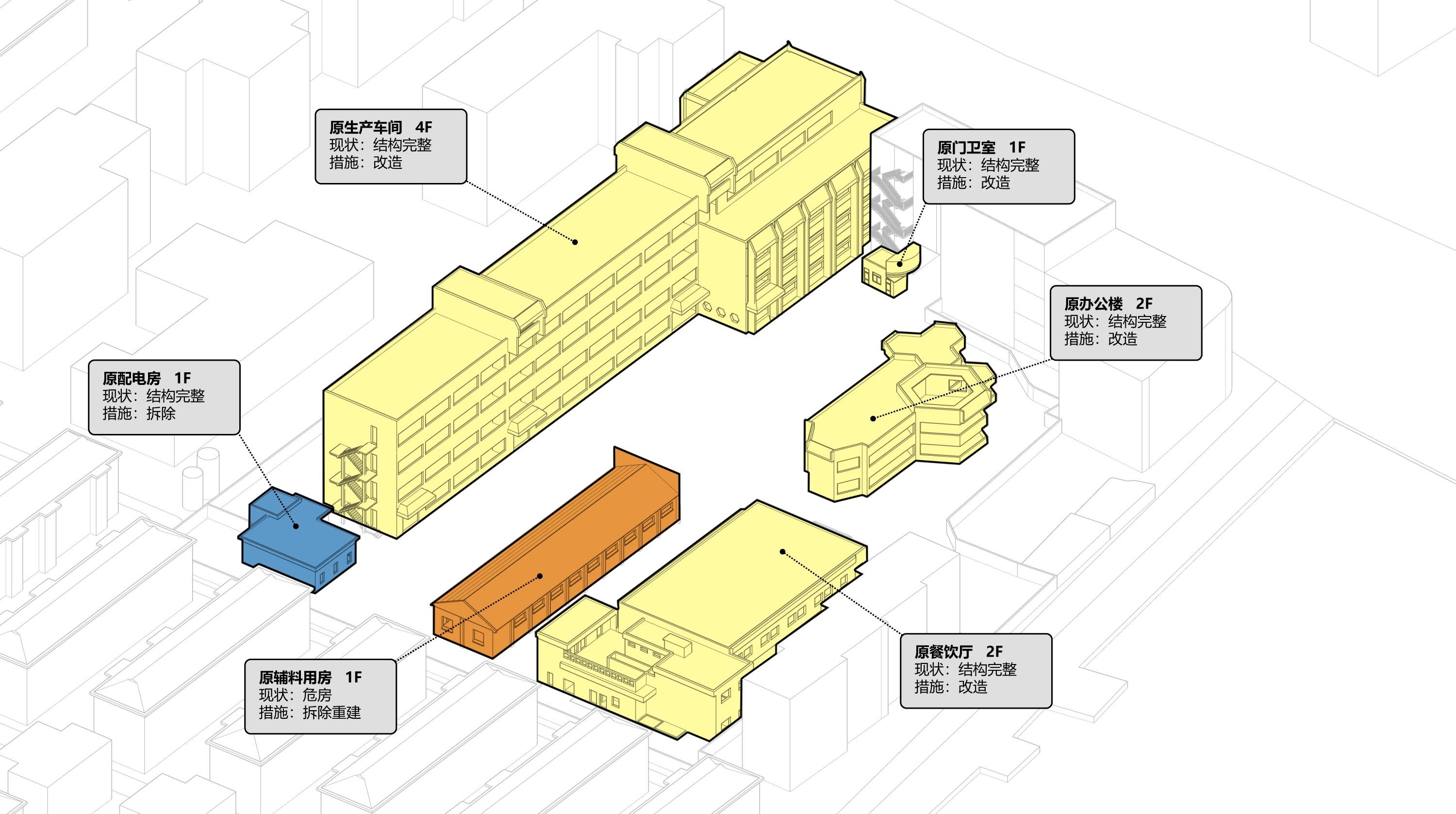
▼城市入口?吳清山
Entrance to the park?Wu Qingshan
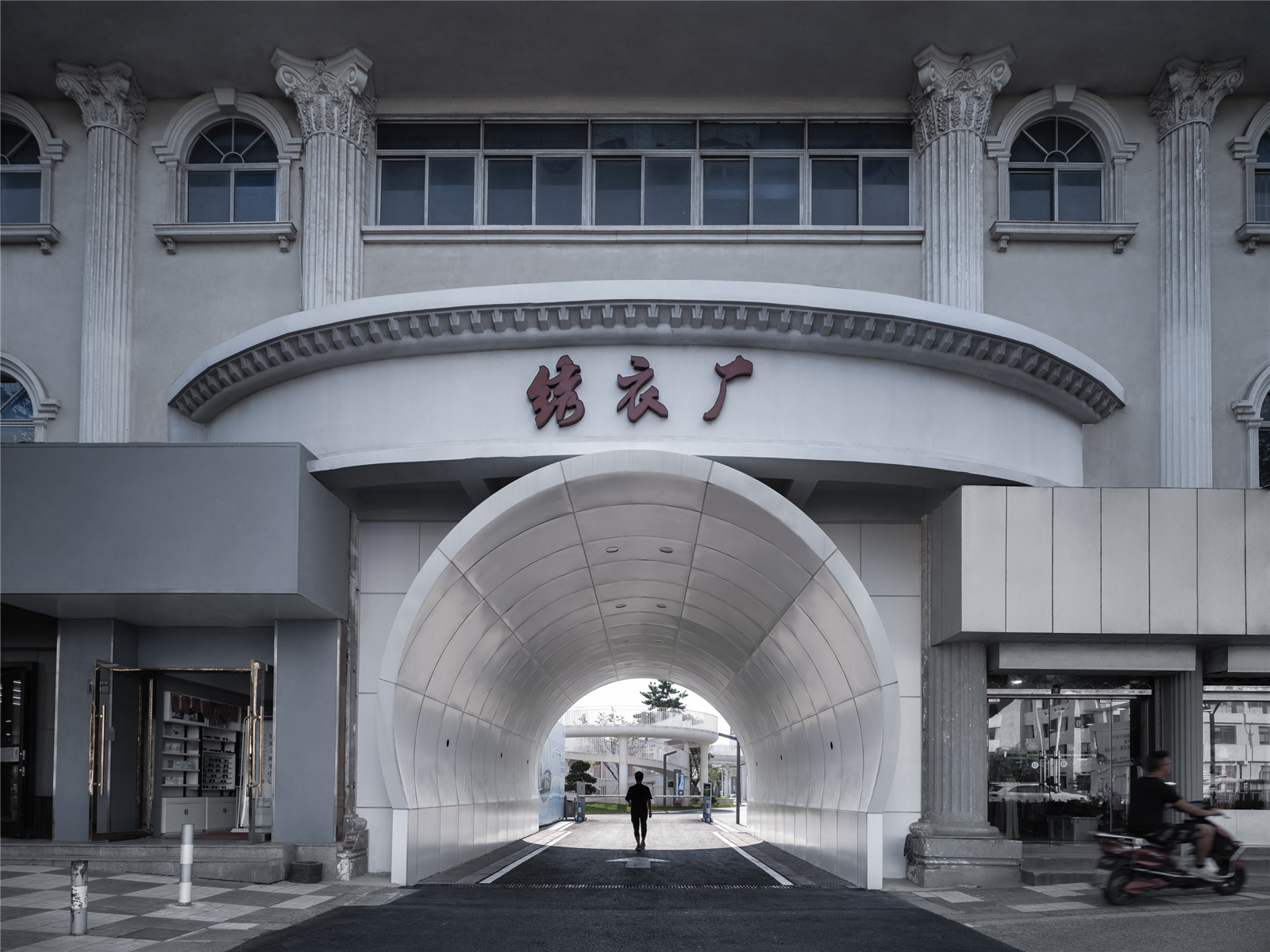
▼夜的甬道?吳清山
Night corridor?Wu Qingshan
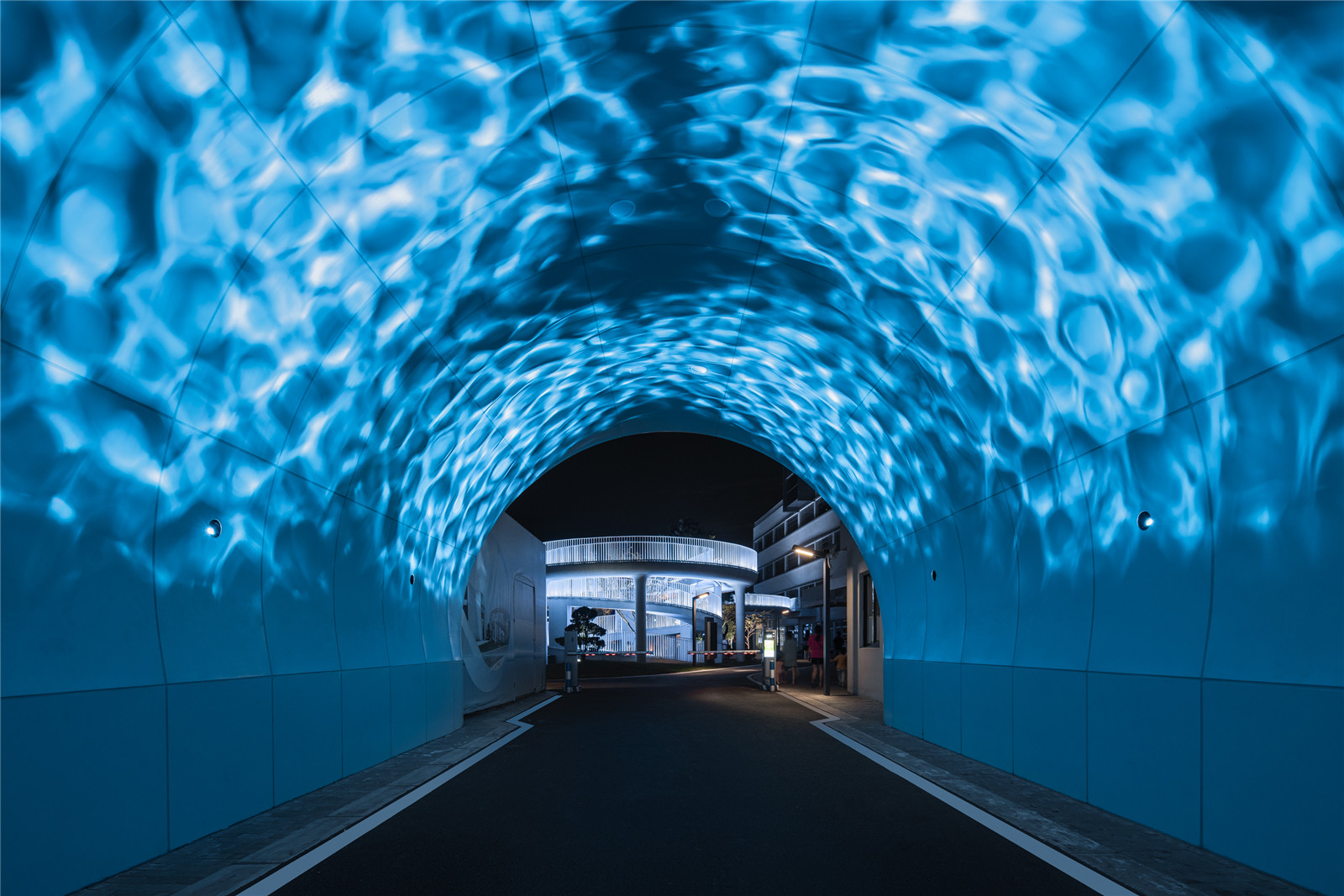
“云”本身是一個(gè)抽象的語(yǔ)言����,卻是中國(guó)傳統(tǒng)山水畫(huà)中最寫(xiě)意的部分。云在畫(huà)中劃分了峻嶺山峰,隱藏了亭臺(tái)樓閣�����,它看似遮蓋了事物�����,卻能激發(fā)每一位觀看者的個(gè)人經(jīng)驗(yàn)和想象����,成為畫(huà)意中最有趣的部分,這可以稱之為最早的精神互動(dòng)�。我們以“云”作為造型元素,藉云的飄逸自由��,創(chuàng)造出獨(dú)特的行走體驗(yàn)��,也讓原來(lái)建筑真正與人互動(dòng)起來(lái)����。建筑的差異性從而被新的元素語(yǔ)言彌合,它不再是佇立的孤島���,而是場(chǎng)地上最有趣的表情�����。
"Cloud" itself is an abstract language, but it is the part that can best describe the artistic conception in Chinese traditional landscape painting. Clouds divide mountains and hide pavilions in the painting. It seems to cover things, but it can stimulate everyone's personal experience and imagination, and become the most interesting part of the painting, which can be called the earliest spiritual interaction. We take "cloud" as the modeling element and create a unique walking experience with the help of the elegance and freedom of the cloud, which also makes the original building truly interact with people. The new element language integrates the difference of architecture. It is no longer a standing island, but the most fascinating expression on the site.
▼概念分析
Conceptual Diagram?MINAX
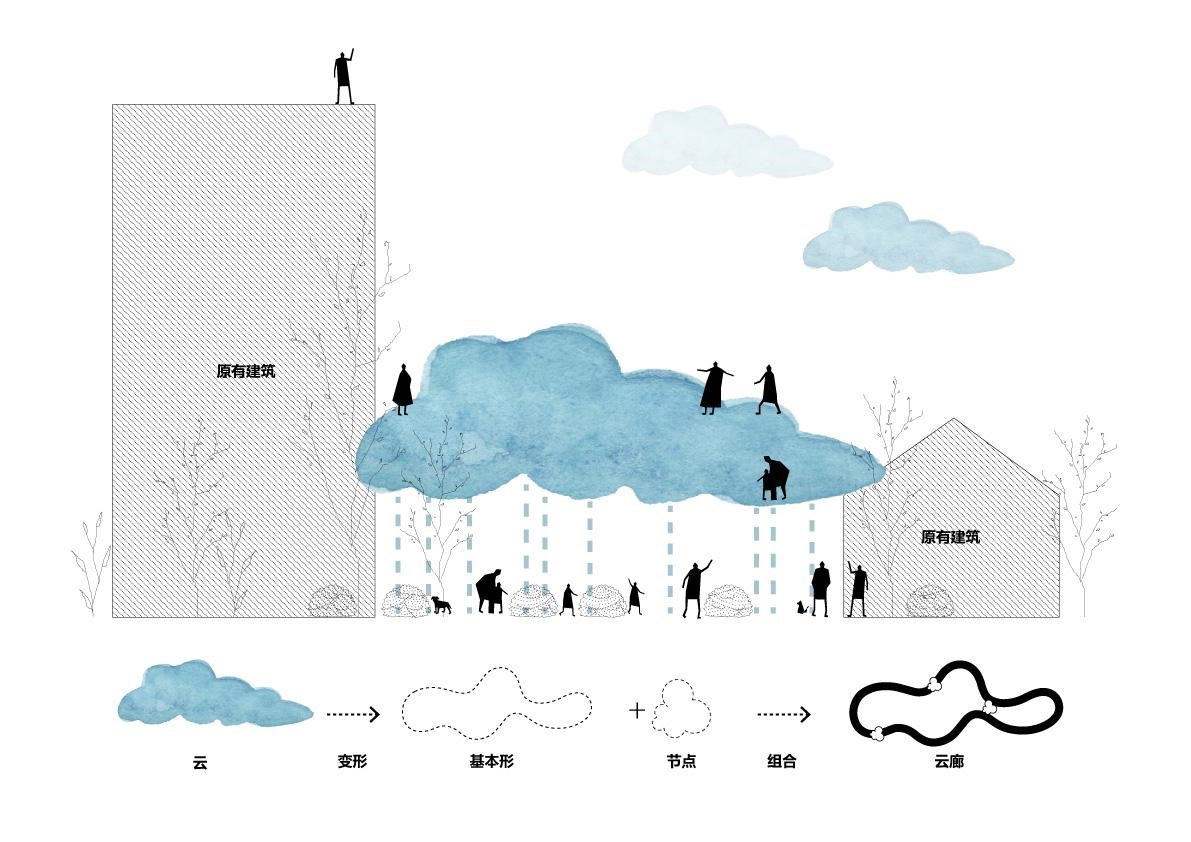
▼云廊勾勒出新的天空輪廓?吳清山
The cloud corridor outlines a new sky?Wu Qingshan

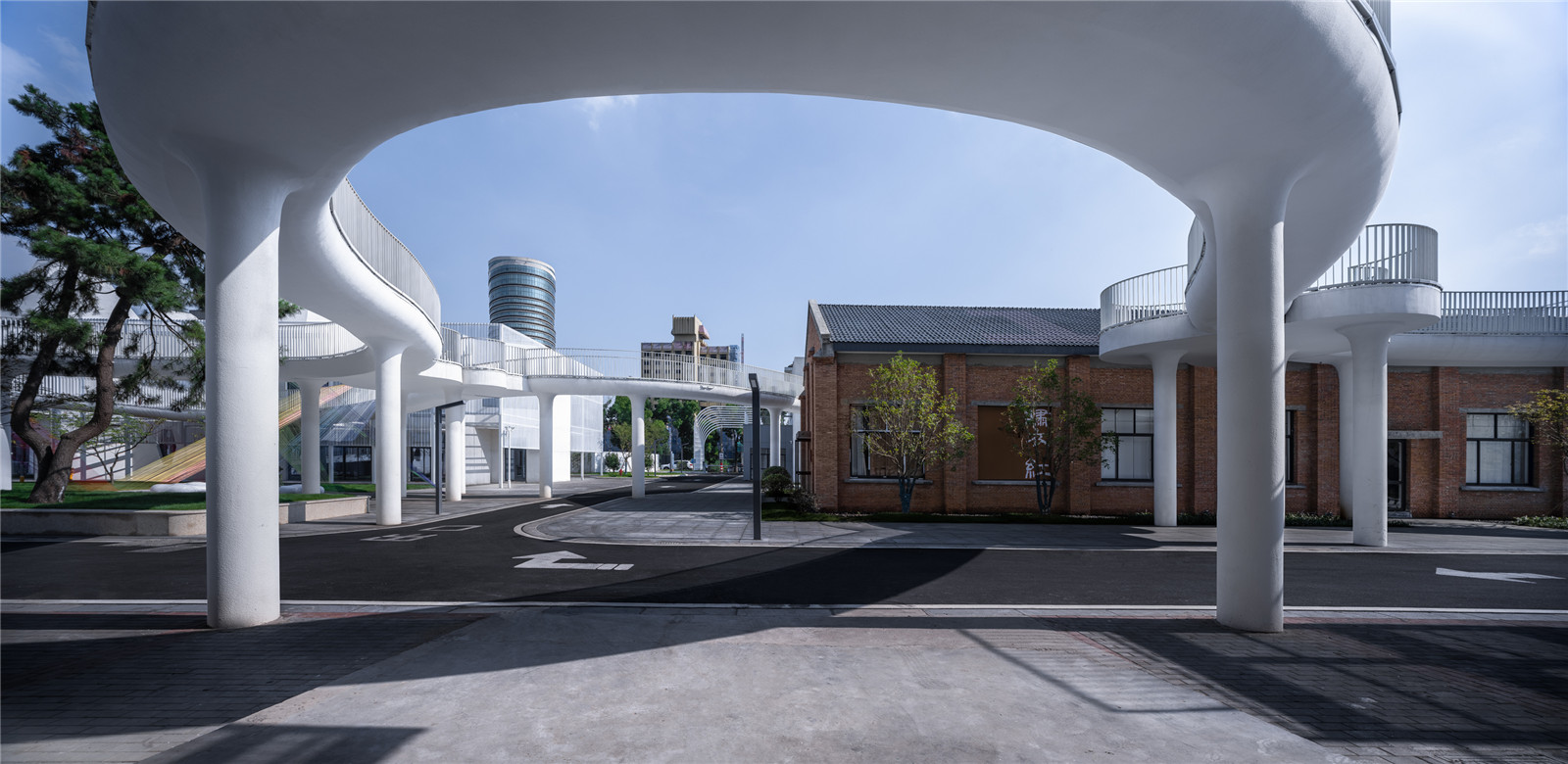
▼云下的風(fēng)景?吳清山
Cloud scenery?Wu Qingshan
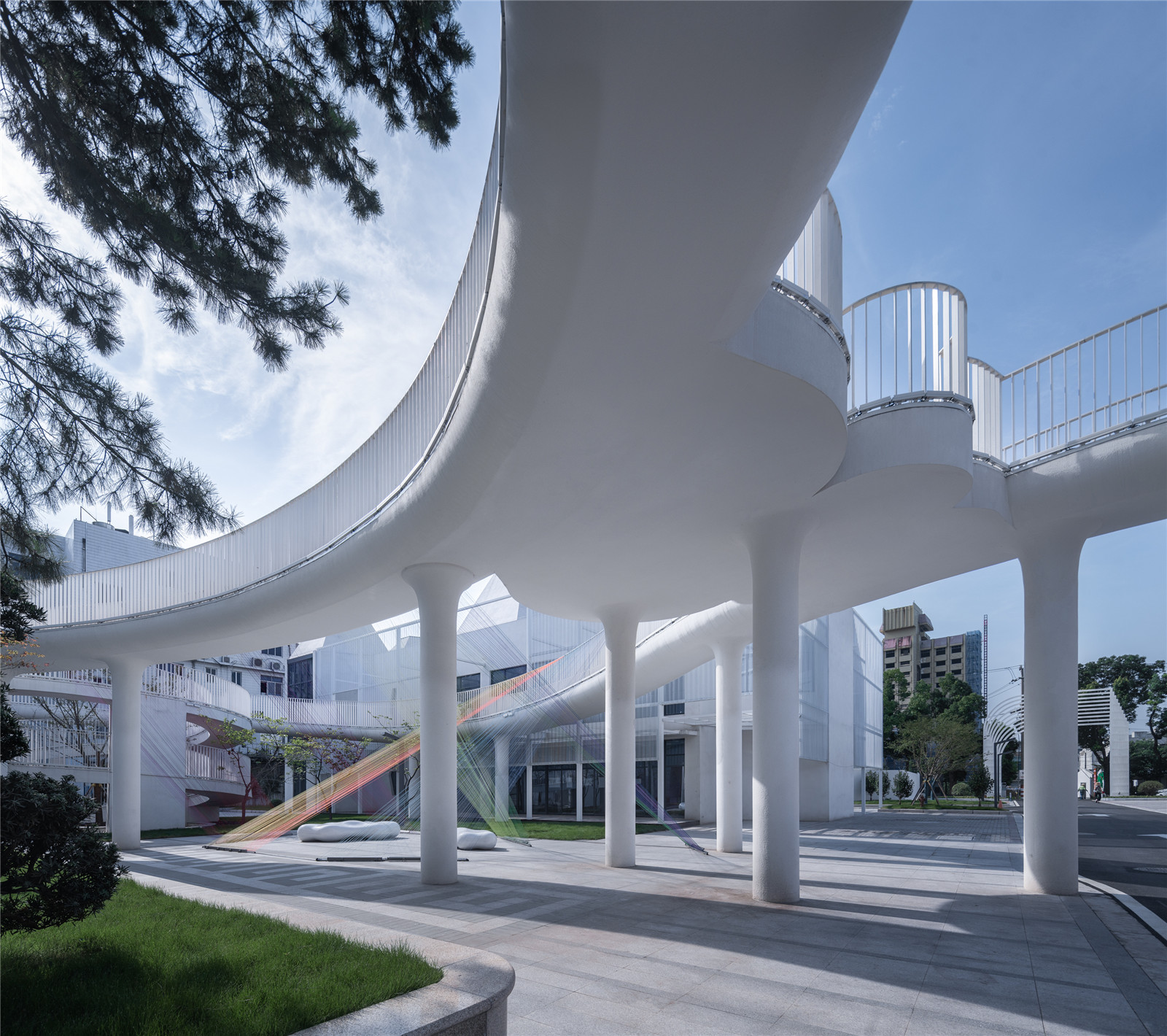
▼云過(guò)紅墻?盧志剛
Clouds over the red wall?Lu Zhigang
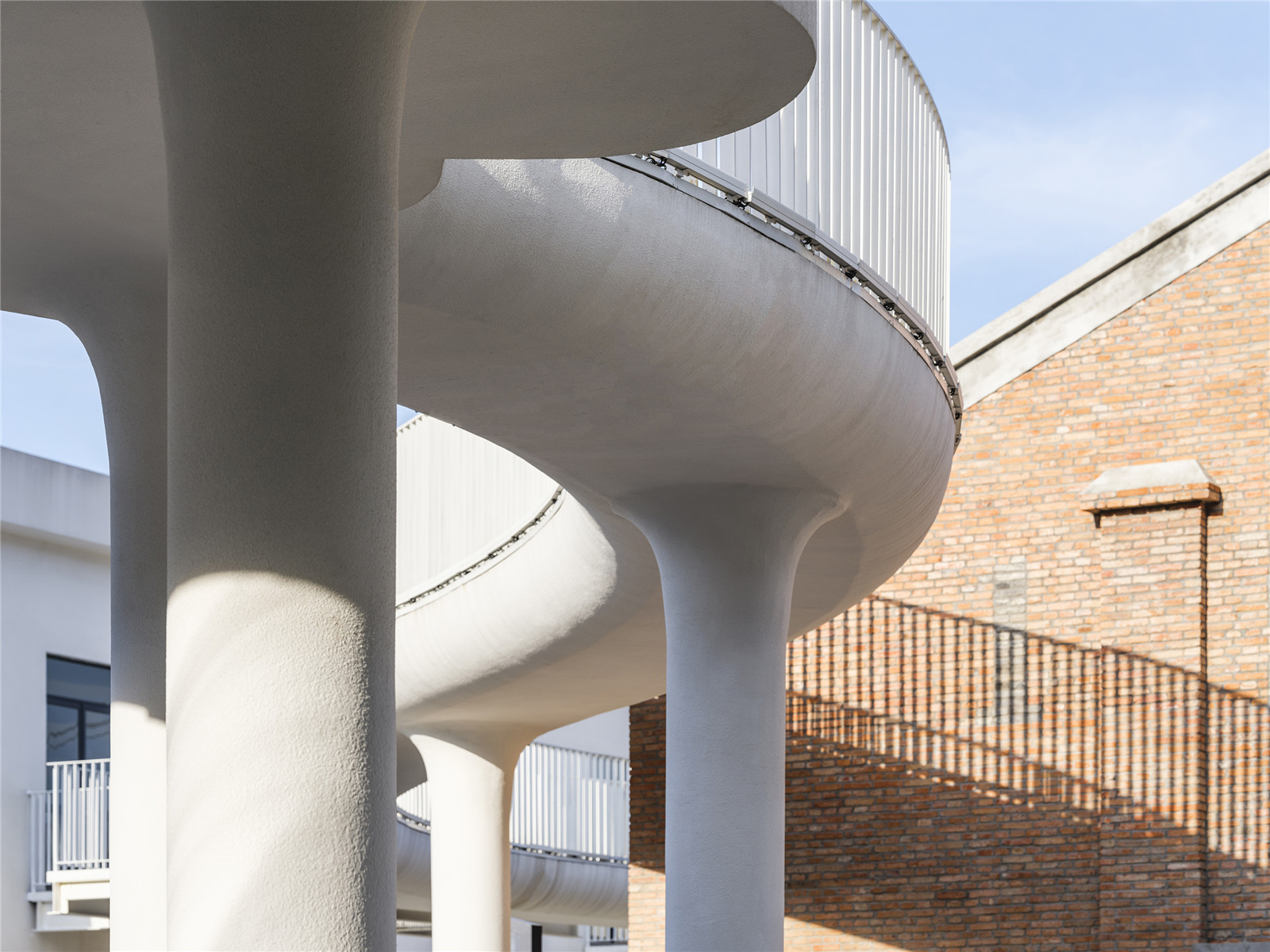
建筑的“新”是相對(duì)于“舊”的詩(shī)意重組����。我們以一條飄浮靈動(dòng)的云廊置入到原本堅(jiān)硬肅穆的建筑體間。云廊彌合了建筑����,填補(bǔ)了空隙,讓人的腳步脫離地面的束縛后展開(kāi)一場(chǎng)在時(shí)間和空間中的浪漫旅程�。原本直白而乏味的場(chǎng)所,由于云廊的介入�,產(chǎn)生了積極的變化�����,空間輪廓和維度被重新劃分�����。云廊以一種柔和的姿態(tài)建筑間的場(chǎng)地上誕生出新的形狀��,我們隨著云廊的蜿蜒和起伏在建筑間游走���。
The "new" of architecture is a poetic re-combination relative to the "old". We put a floating clever cloud corridor between the original hard and solemn building volumes. The cloud corridor integrated with the architecture, filling the gap, and allowing people to embark on a romantic journey in time and space after breaking away from the shackles of the ground. The original straightforward and boring place has undergone positive changes after the intervention of the cloud corridor, and the spatial outline and dimension have been re-divided. The cloud corridor gave birth to a new shape on the site of the building with a gentle gesture, and we wandered around the buildings along the winding and undulation of the cloud corridor.
▼新與舊的詩(shī)意組合?吳清山
New and old poetic combination?Wu Qingshan
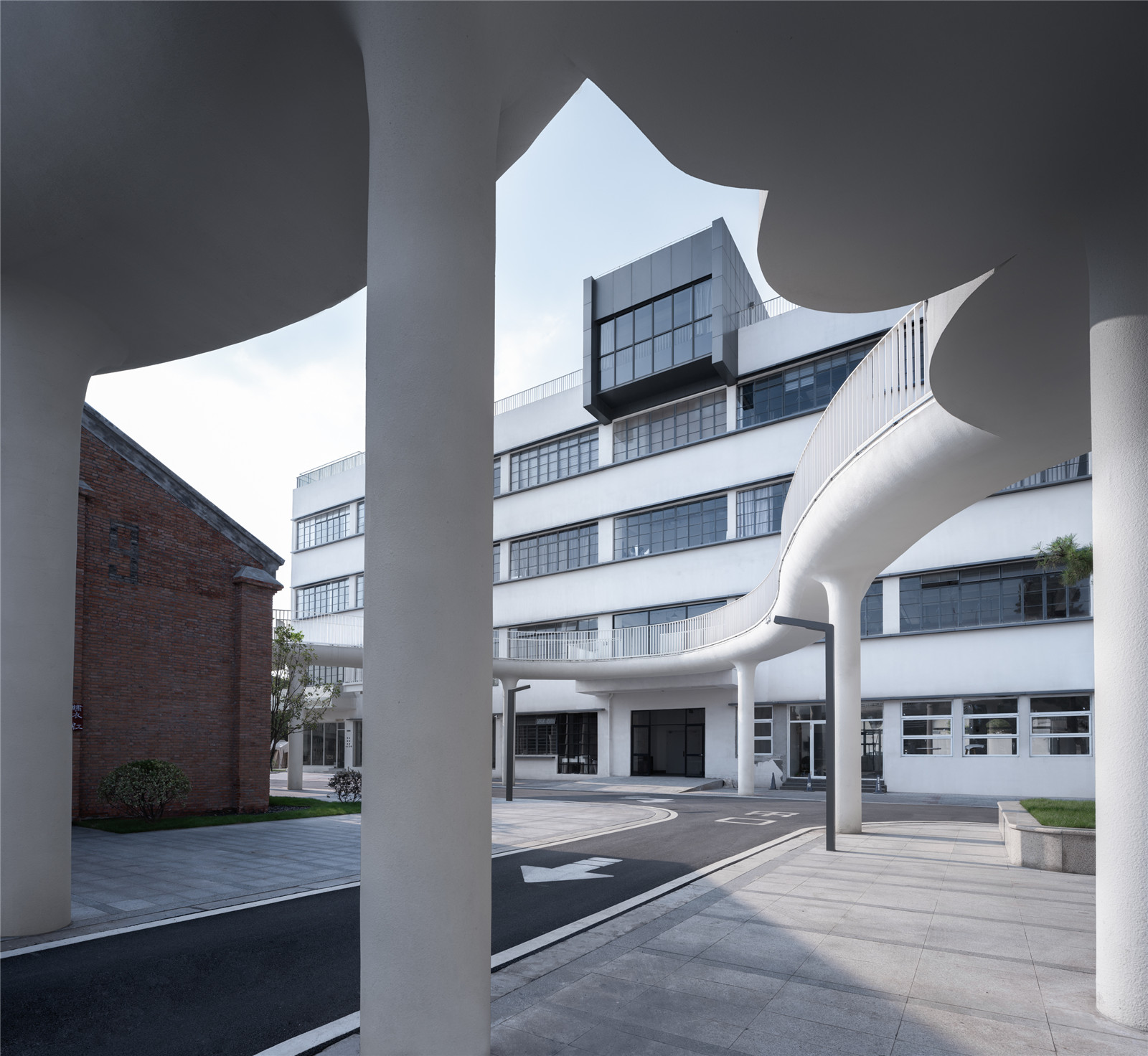
▼新舊并置?吳清山
Juxtaposition of old and new?Wu Qingshan
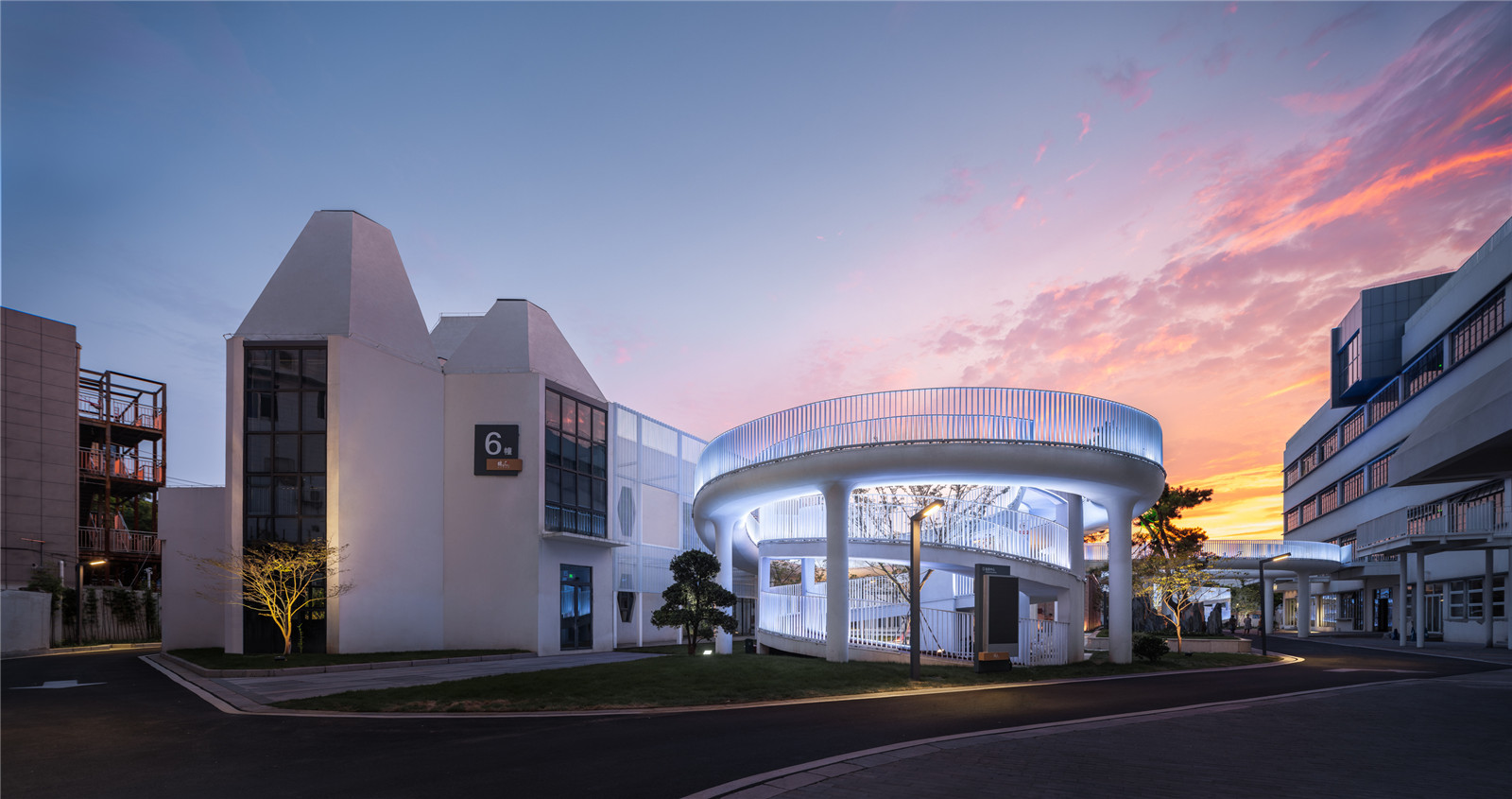
▼云廊飛渡?吳清山
Cloud corridor Flyover?Wu Qingshan
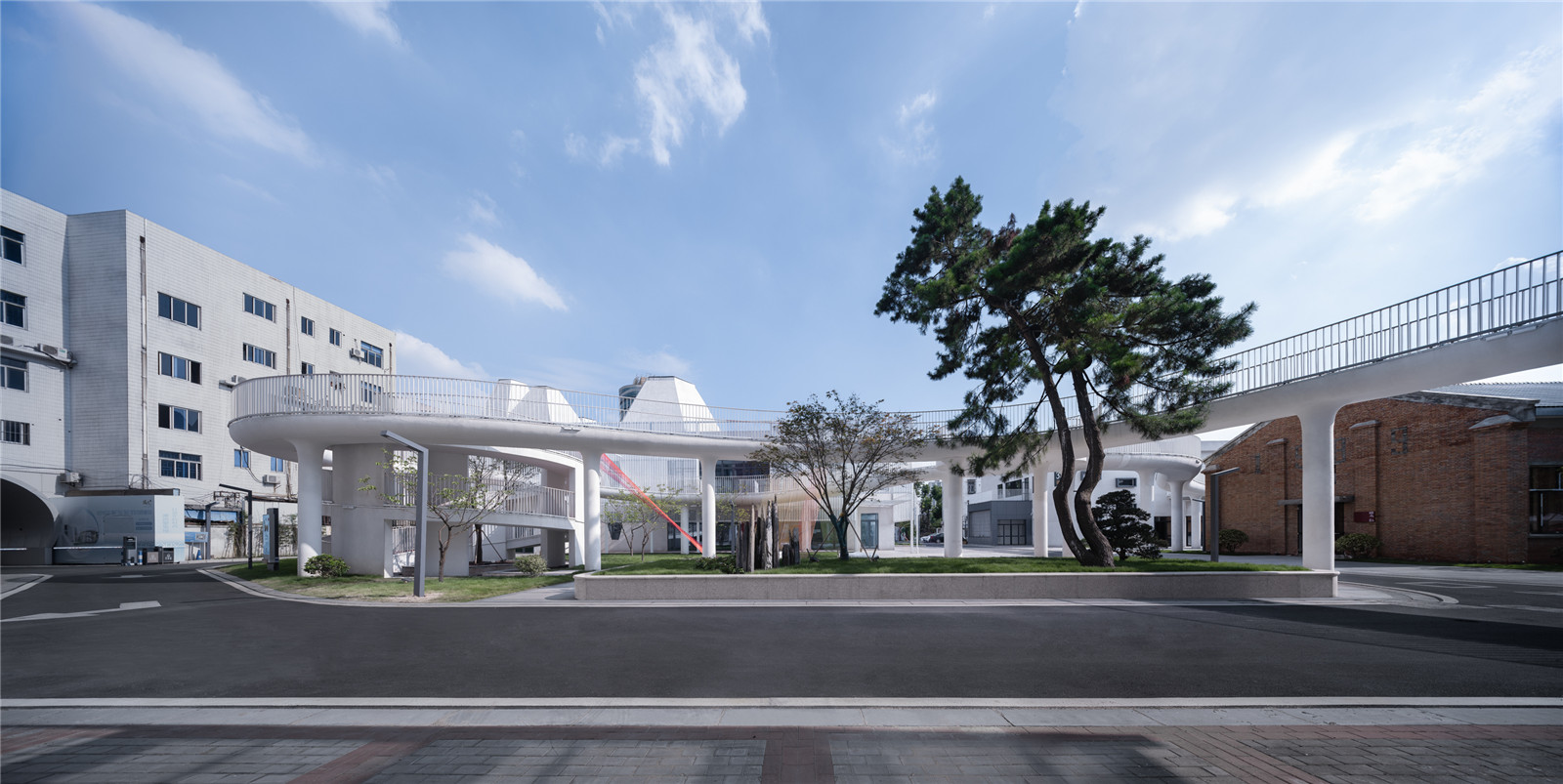
▼紅磚墻與廊橋 ?吳清山
Red brick wall and corridor bridge?Wu Qingshan
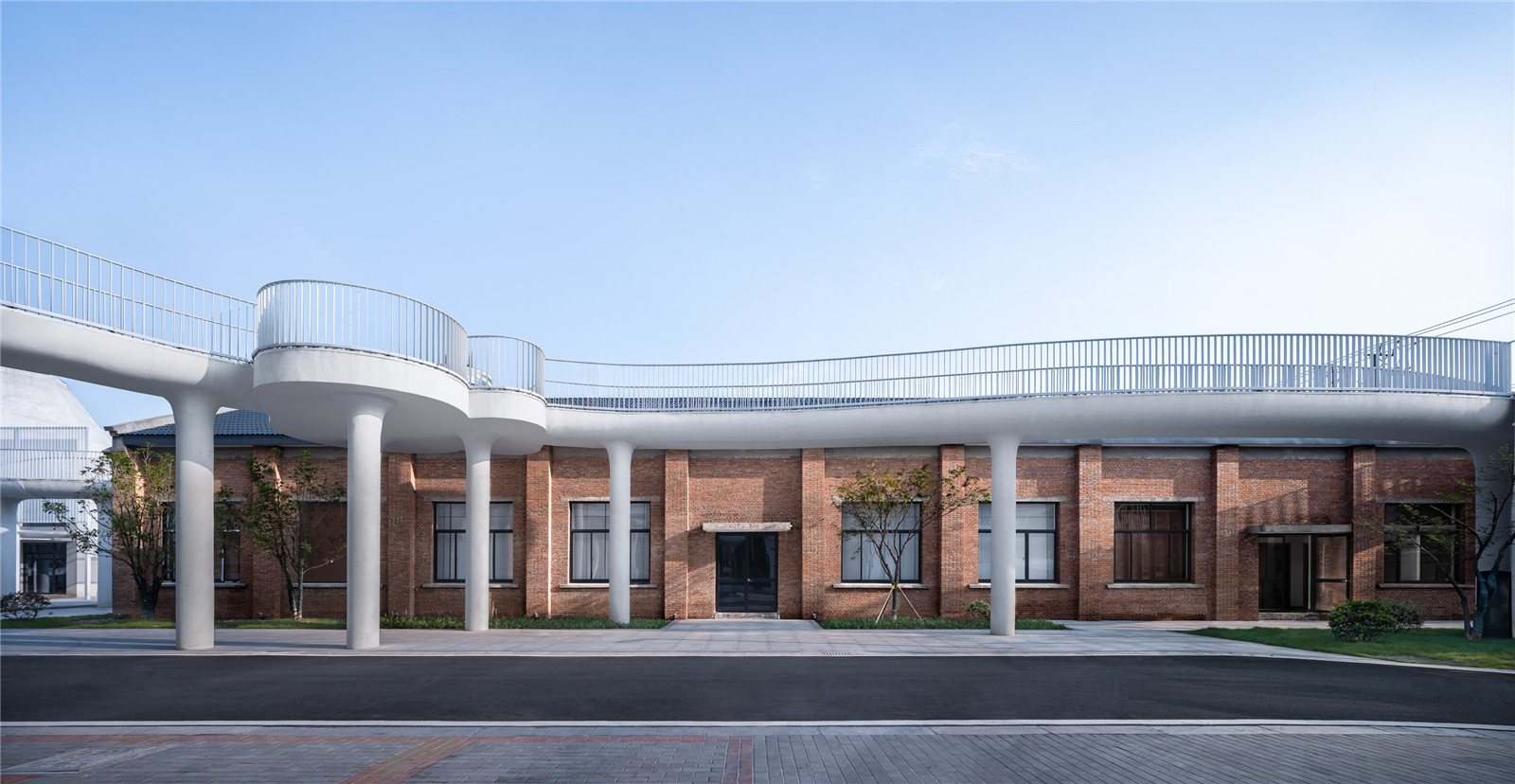
▼云廊與樹(shù)影 ?吳清山
Cloud corridor and tree shadow?Wu Qingshan

▼穿越與連接?盧志剛
Crossing and connection?Lu Zhigang
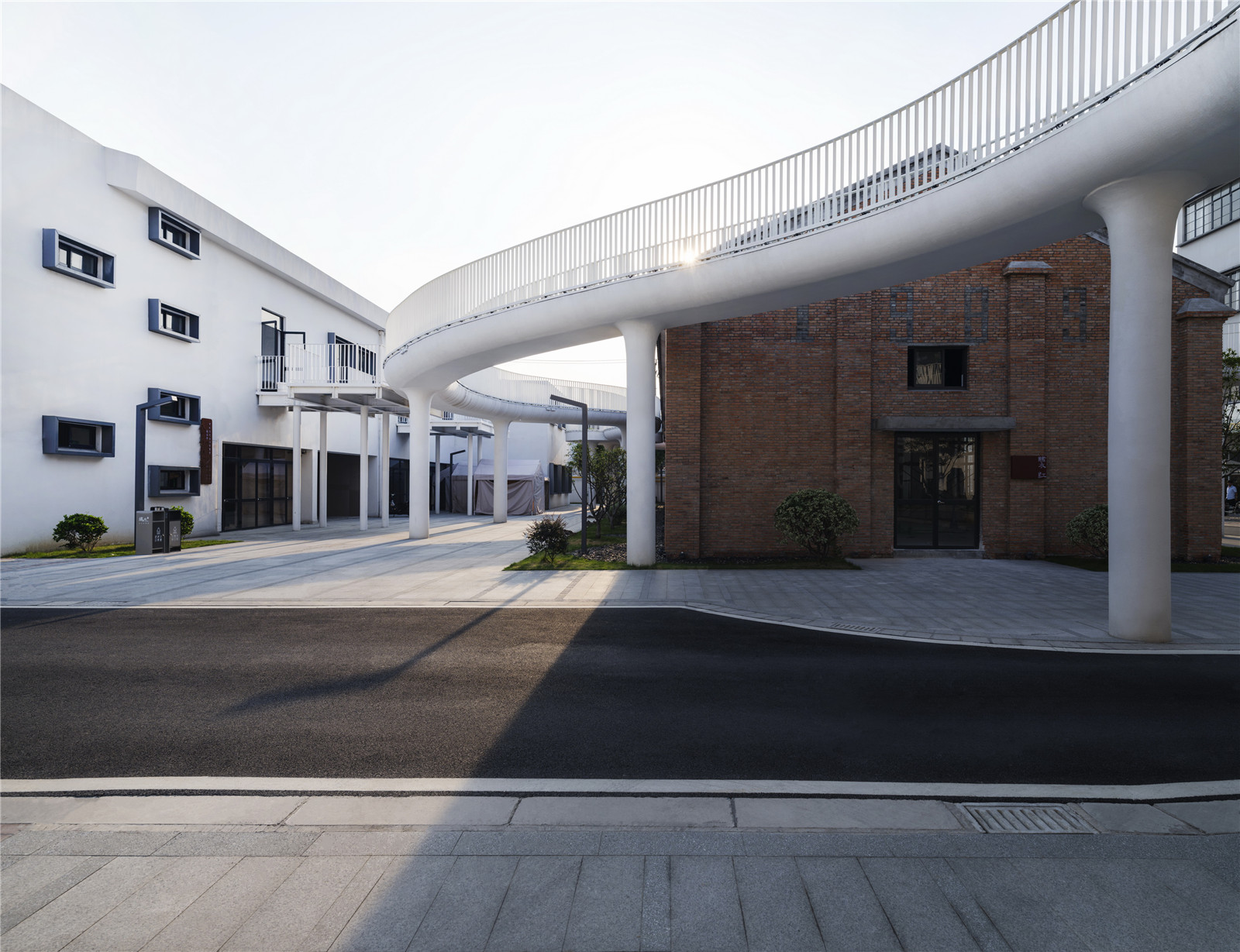
▼新與舊的圖景?吳清山
New and old ?Wu Qingshan
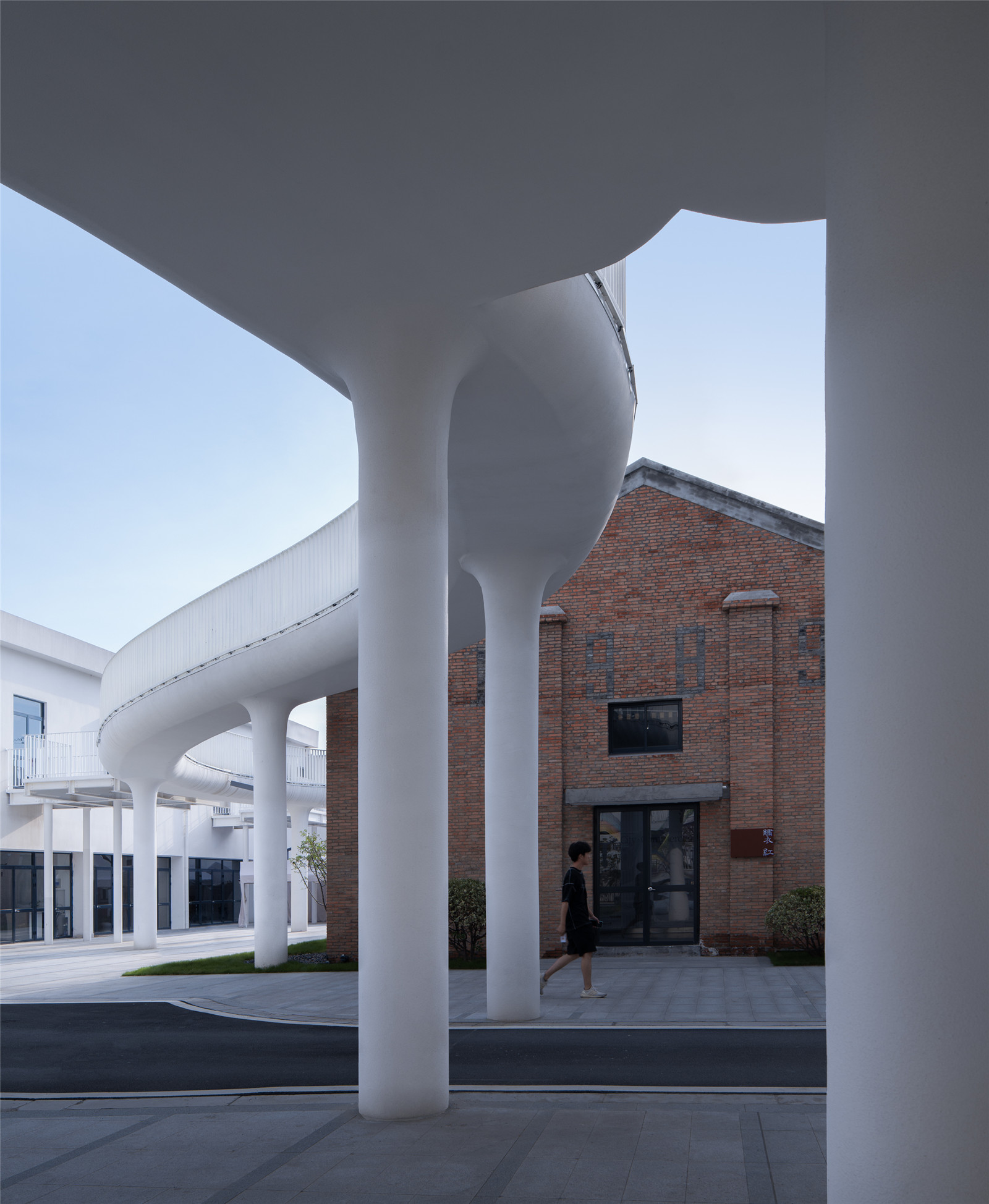
中國(guó)的既有建筑改造經(jīng)歷了不同的階段�����,從覆蓋式的拆除新建��,到原汁原味的保留更新�����,對(duì)于不同的操作對(duì)象���,理應(yīng)有不同的方式�����?����;趧?chuàng)新的舊改����,是真正使建筑煥發(fā)持續(xù)生命力���,適合時(shí)代發(fā)展最有效方式之一����。江南繡衣廠是我們對(duì)于這種創(chuàng)新的舊改策略的全新實(shí)踐。建筑的真正價(jià)值是其使用價(jià)值����。在使用過(guò)程中,不同使用者所帶來(lái)的豐富而個(gè)性的生活印記���,才能使建筑長(zhǎng)久的為人服務(wù)��、與時(shí)代和社會(huì)共存�����,成為時(shí)代發(fā)展的記錄者�����。
The reconstruction of existing buildings in China has gone through different stages, from covering new construction after demolition to complete retention and renewal. There should be other ways for different operation objects. Innovation based transformation is one of the most effective ways to truly make buildings glow with sustainable vitality and adapt to the development of the times. Jiangnan embroidery garment factory is our entirely new practice of this innovative transformation strategy. The real value of architecture is its use-value. In the process of use, the rich and individual life imprints brought by different users can enable the building to serve people for a long time, coexist with the times and society, and become the recorder of the development of the times.
▼將老建筑包圍的云廊?吳清山
The cloud corridor surrounds the old building?Wu Qingshan
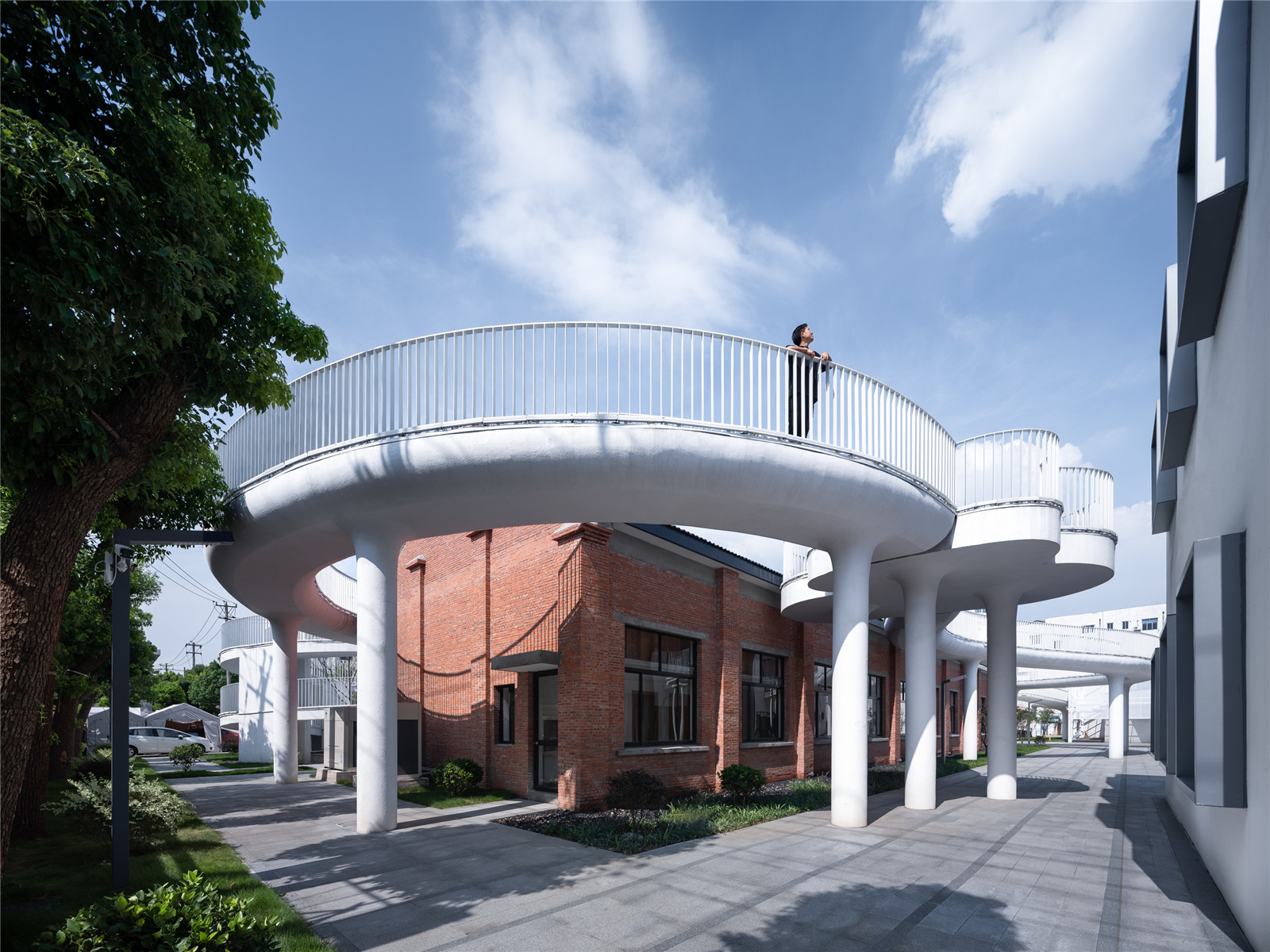
當(dāng)我們?cè)賹徱暯侠C衣廠的時(shí)候,她已不僅僅是作為過(guò)往的生產(chǎn)場(chǎng)地�����,也不僅僅是現(xiàn)在的文創(chuàng)園區(qū),而是成為這個(gè)時(shí)代的時(shí)間切片��,為未來(lái)而來(lái)�����。那些留存的建筑與新筑的云廊�,依舊是不完整的,只有當(dāng)人影從云廊閃過(guò)��,在場(chǎng)地上留下嬉笑與喜悅����,才是一個(gè)完整的畫(huà)面。恰似卞之琳的《斷章》詩(shī)句:
When we review Jiangnan embroidery garment factory, it has become a previous production site, not just the current cultural and creative park, but also a time slice of the current era and come for the future. The remaining buildings and the newly built cloud corridor are still incomplete. It is a complete picture only when figures flash through the cloud corridor and leave laughter and joy on the site. Just like Bian Zhilin's poem "Duan Zhang":
▼連接與重構(gòu)?吳清山
Connection and reconstruction?Wu Qingshan
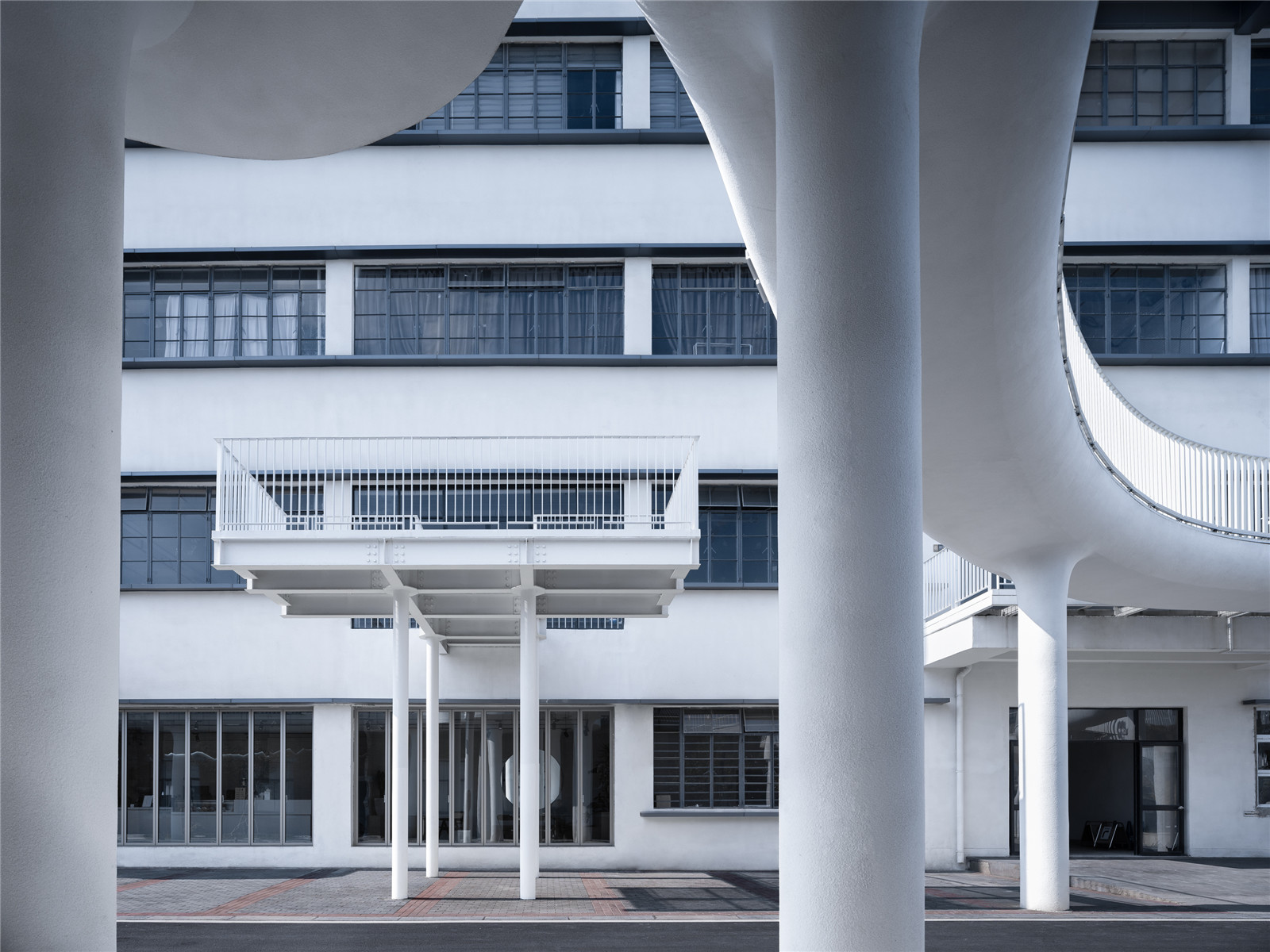
▼環(huán)廊?吳清山
Circular corridor?Wu Qingshan

▼環(huán)廊?吳清山
Circular corridor?Wu Qingshan
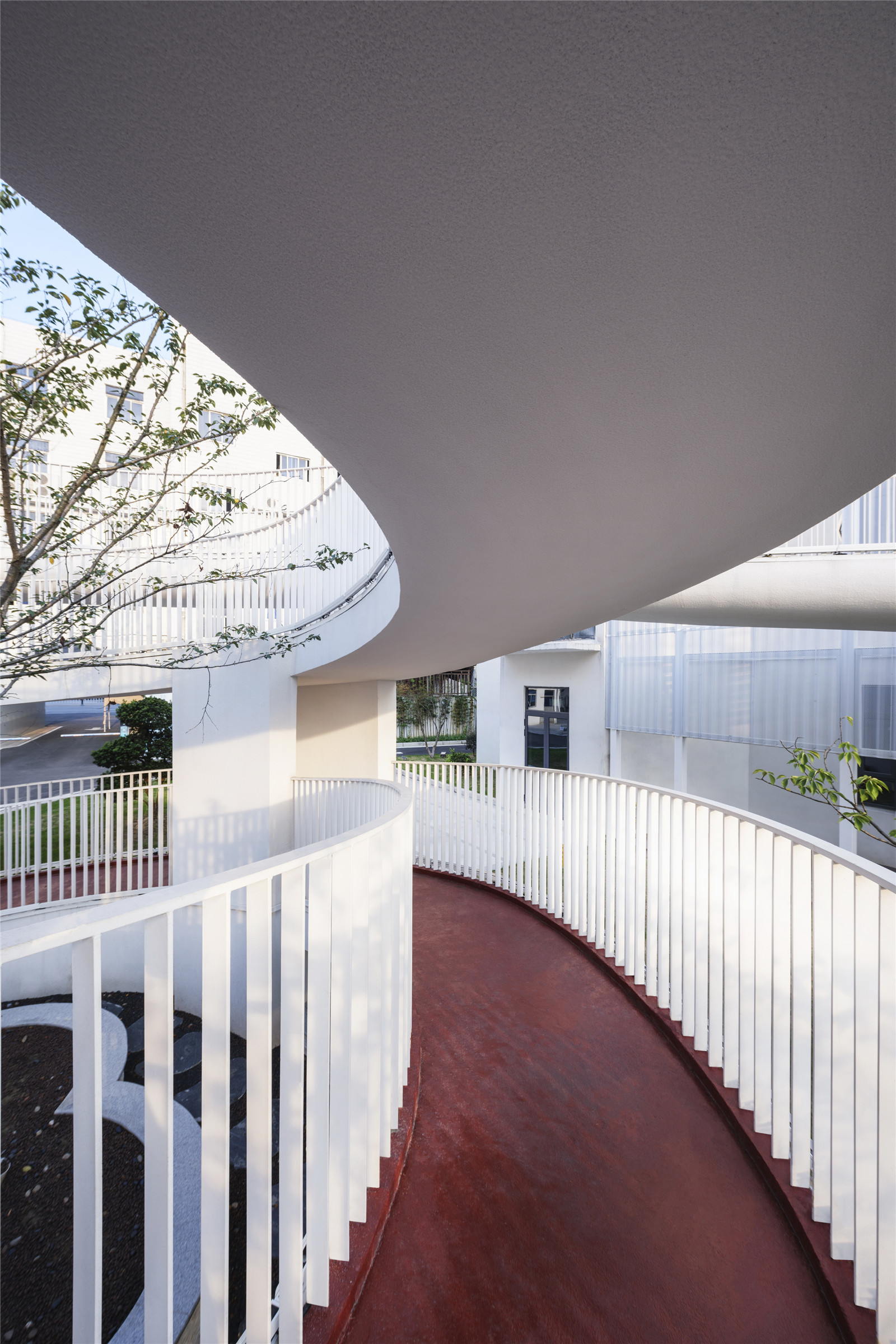
▼環(huán)廊樹(shù)影?吳清山
Circular corridor and tree shadow?Wu Qingshan
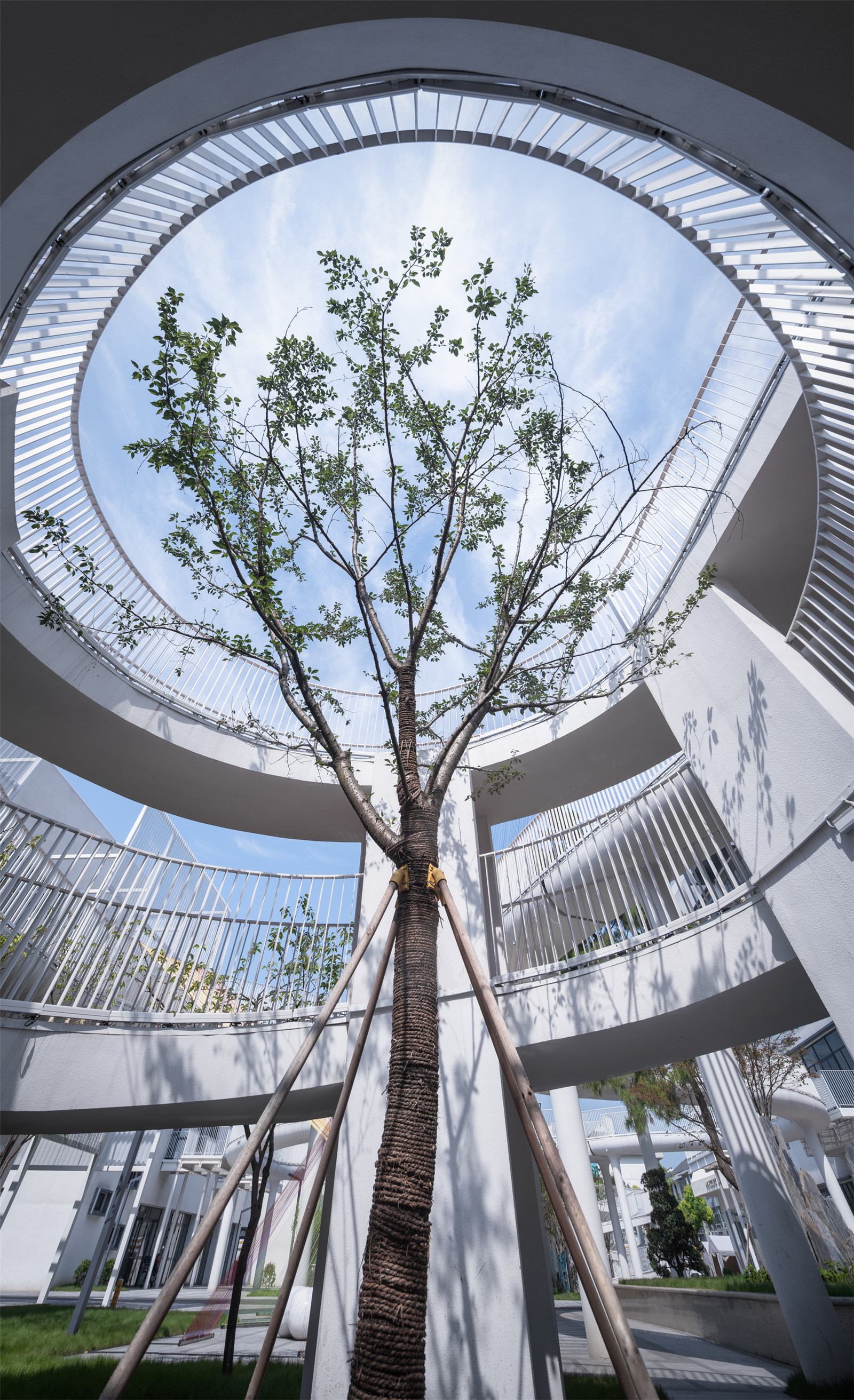
你站在橋上看風(fēng)景�,
看風(fēng)景人在樓上看你。
明月裝飾了你的窗子�,
你裝飾了別人的夢(mèng)。
You stand on the bridge watching the scenery,
The scenery viewer watches you from the balcony.
The glorious moon adorns your window,
You adorn another’s dream.
▼夜色下的云影?吳清山
Cloud corridor and sunset glow?Wu Qingshan
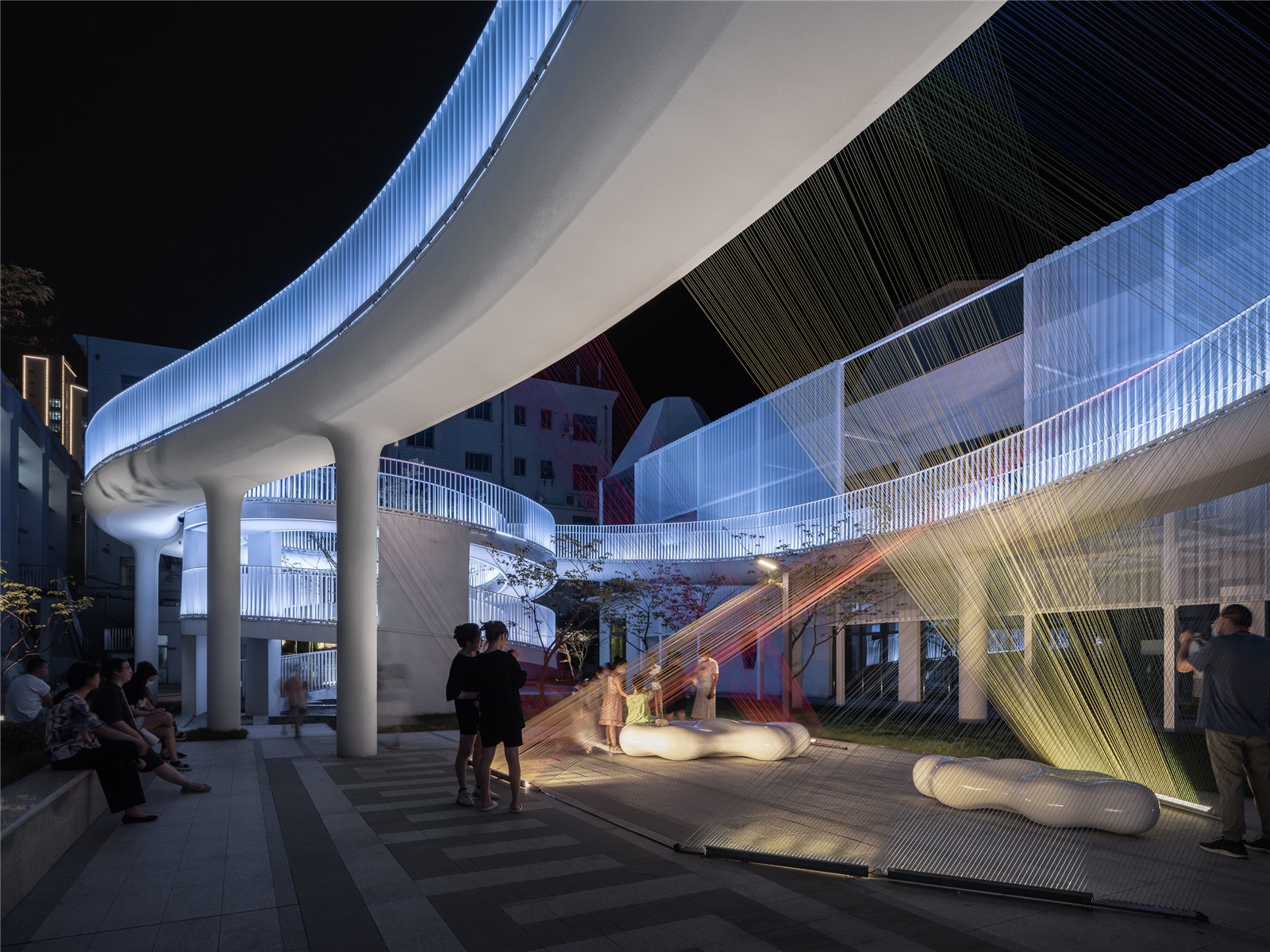
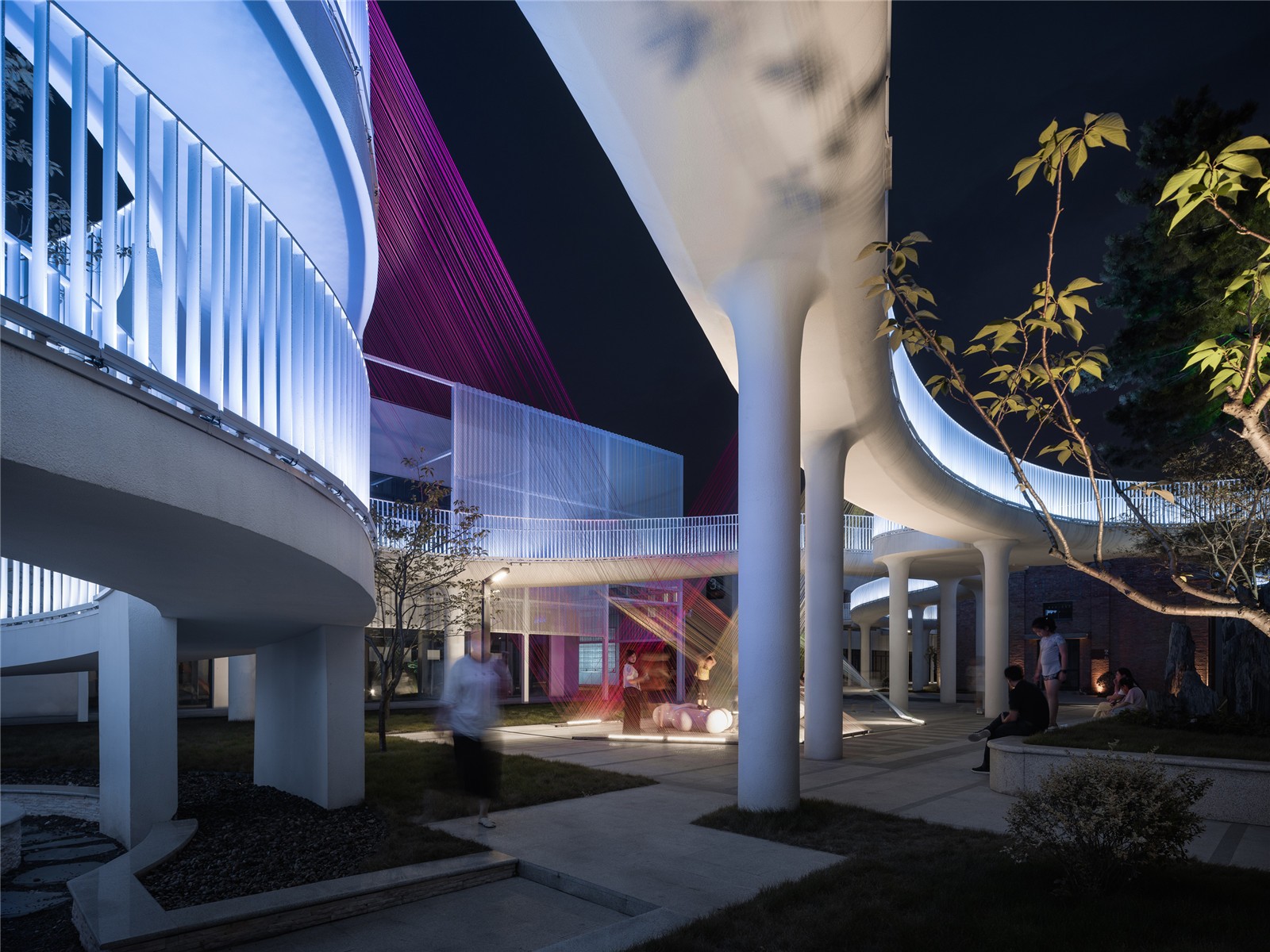
▼夜的云廊?吳清山
Cloud corridor at night?Wu Qingshan
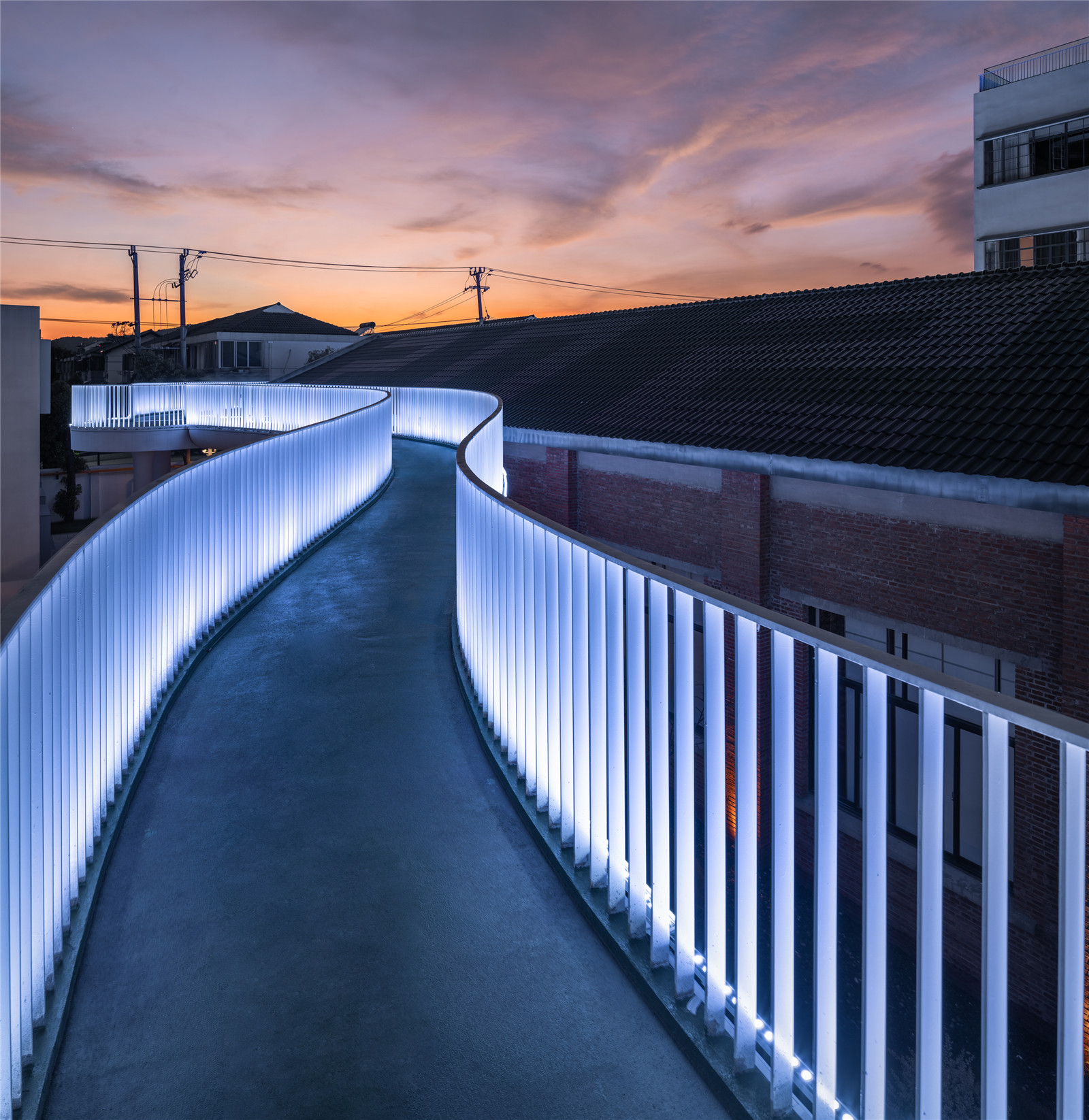
▼天空云影?吳清山
Sky cloud shadow?Wu Qingshan
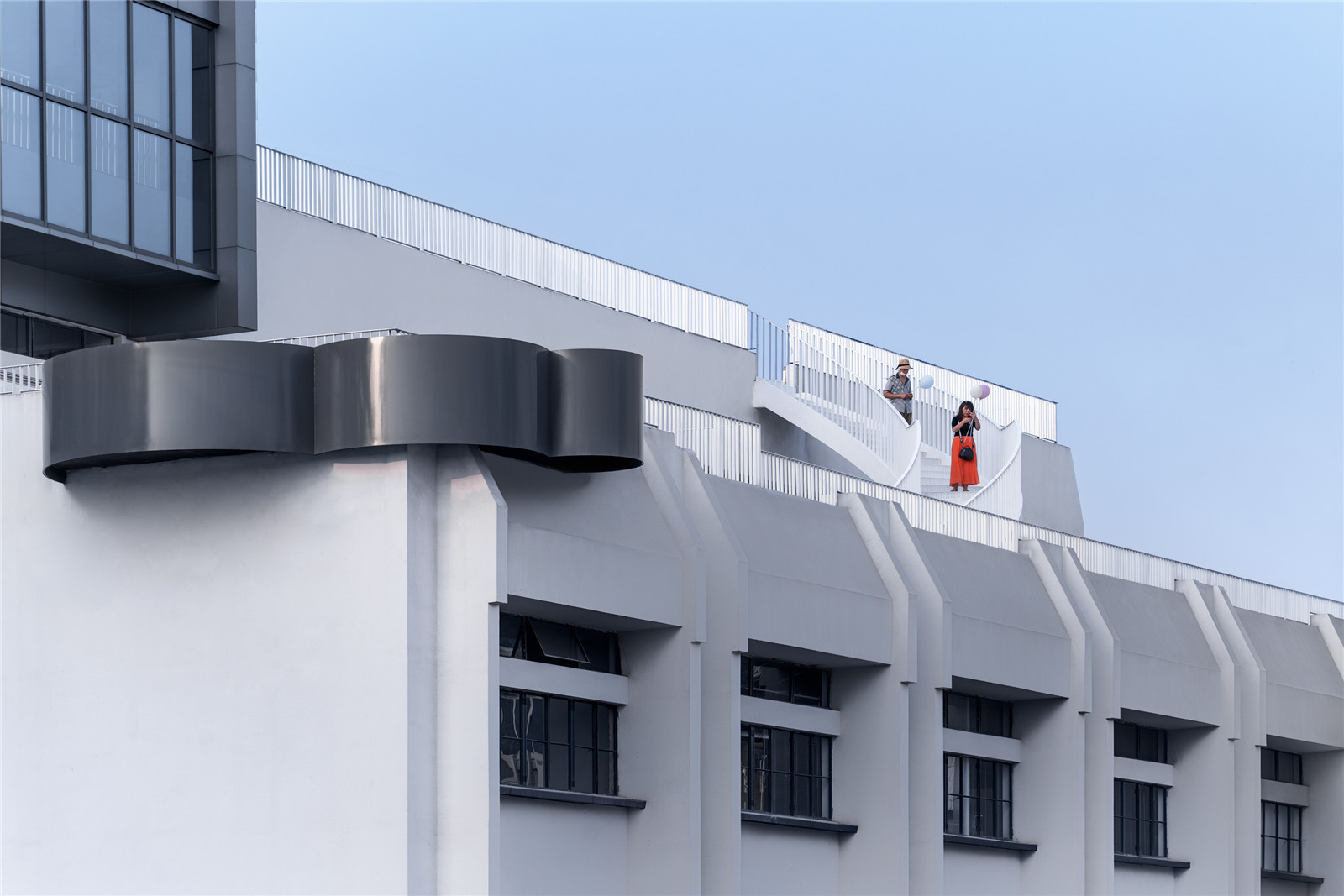
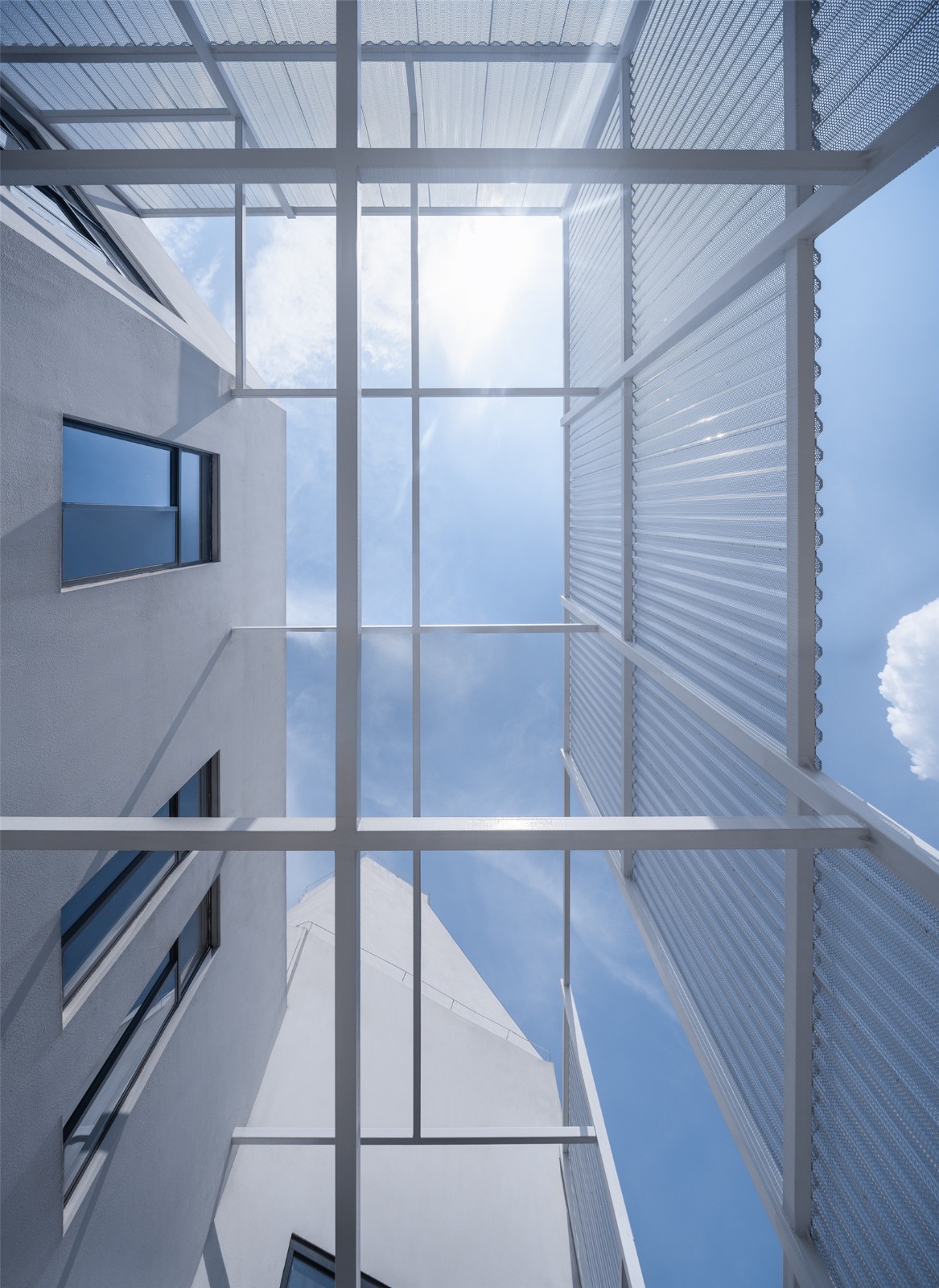

▼云興霞蔚?吳清山
Cloud corridor and sunset glow1?Wu Qingshan
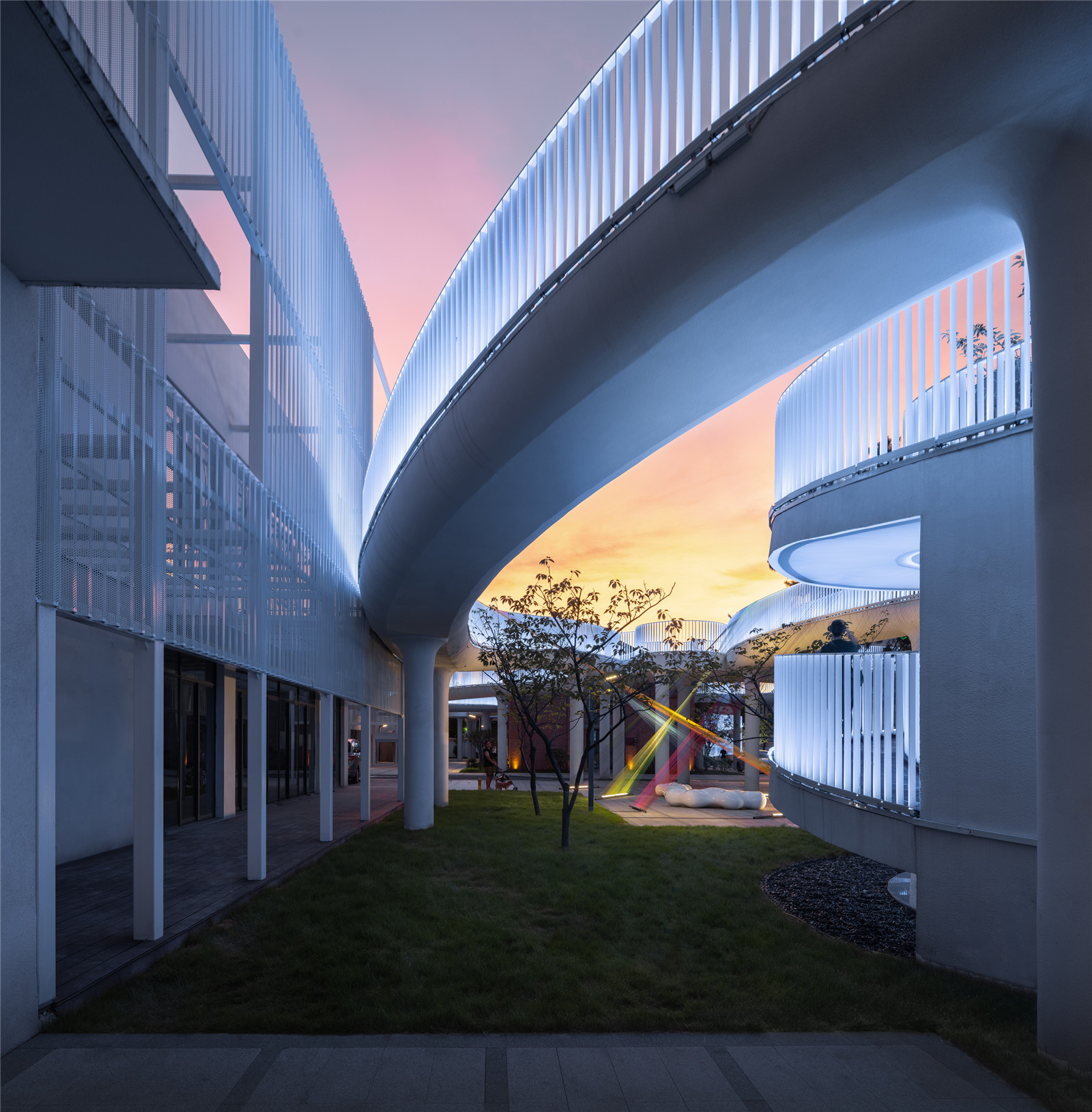
▼城市鳥(niǎo)瞰?吳清山
Aerial view of the city?Wu Qingshan
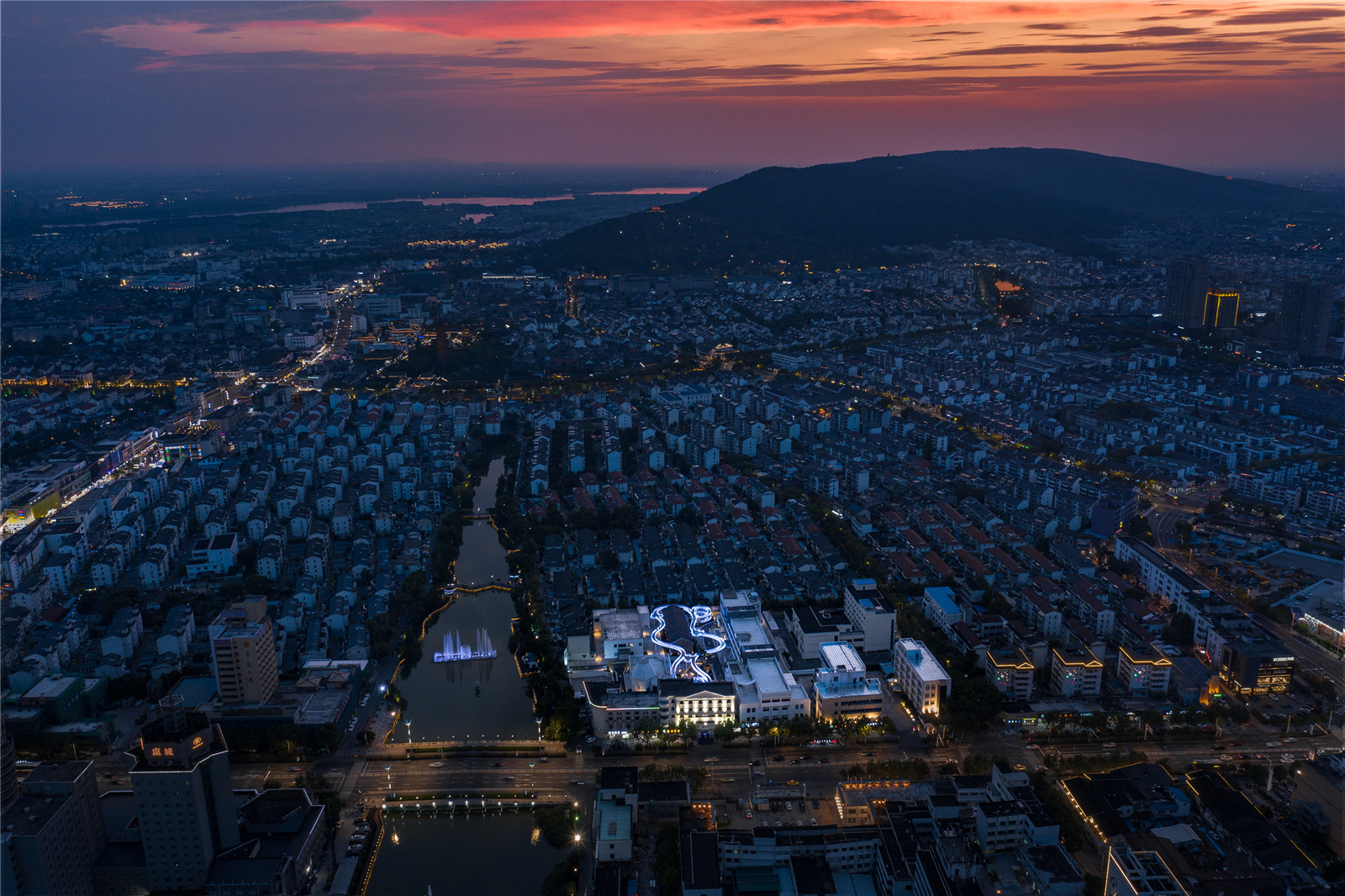
▼總平面圖
Site Plan?MINAX
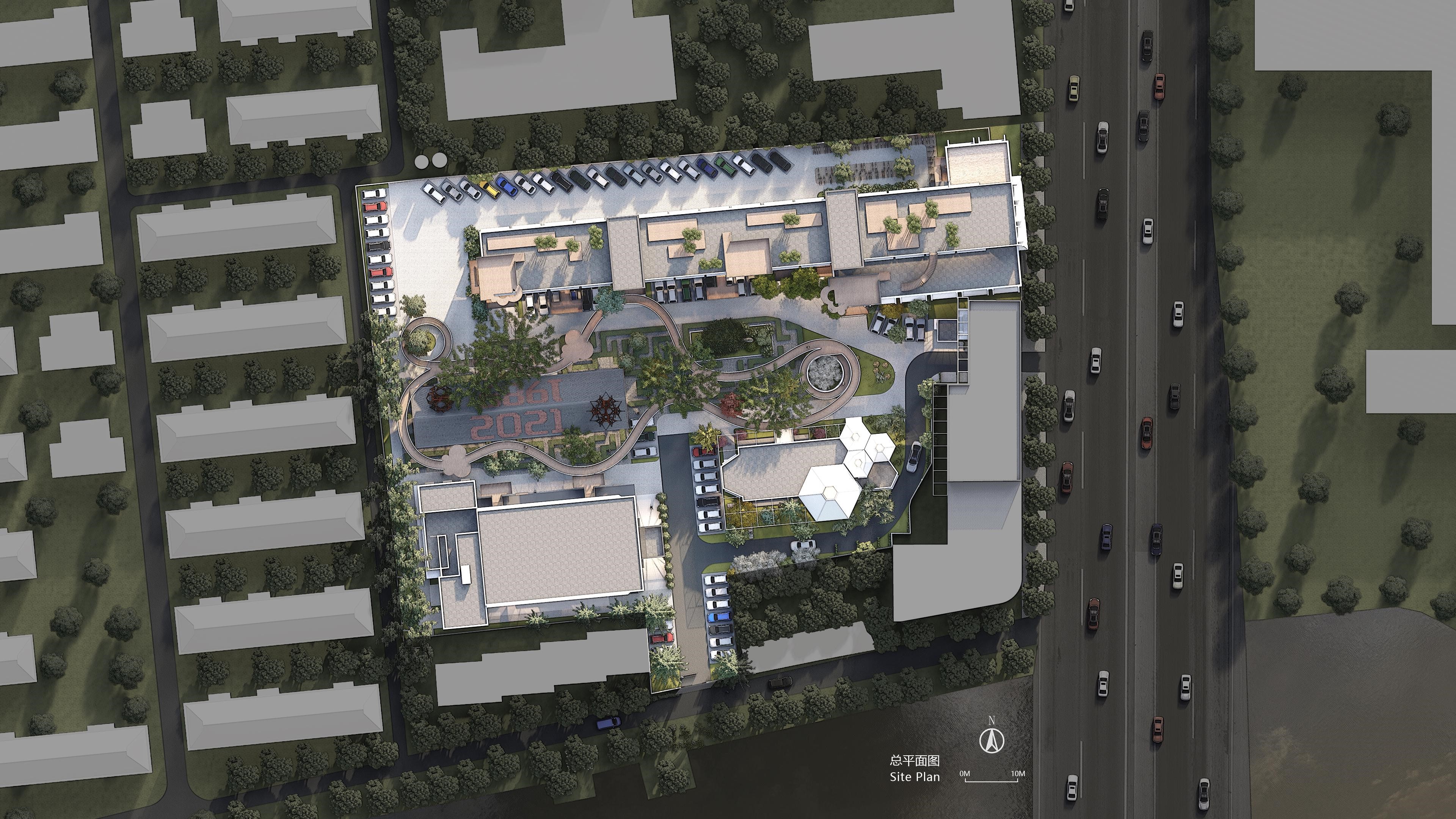
▼構(gòu)成分析
Breakdown drawing?MINAX
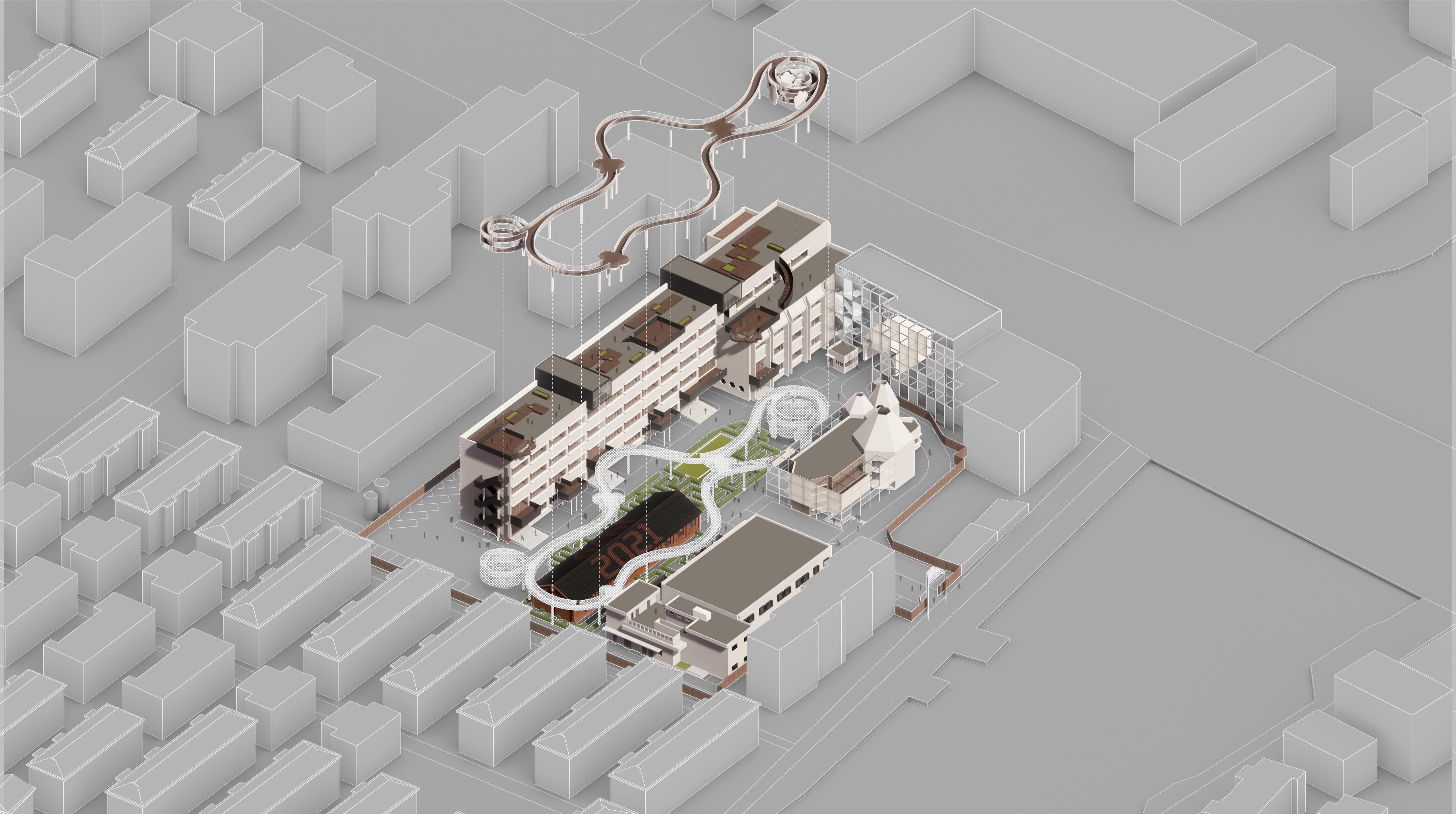
▼新舊對(duì)比
Before vs After
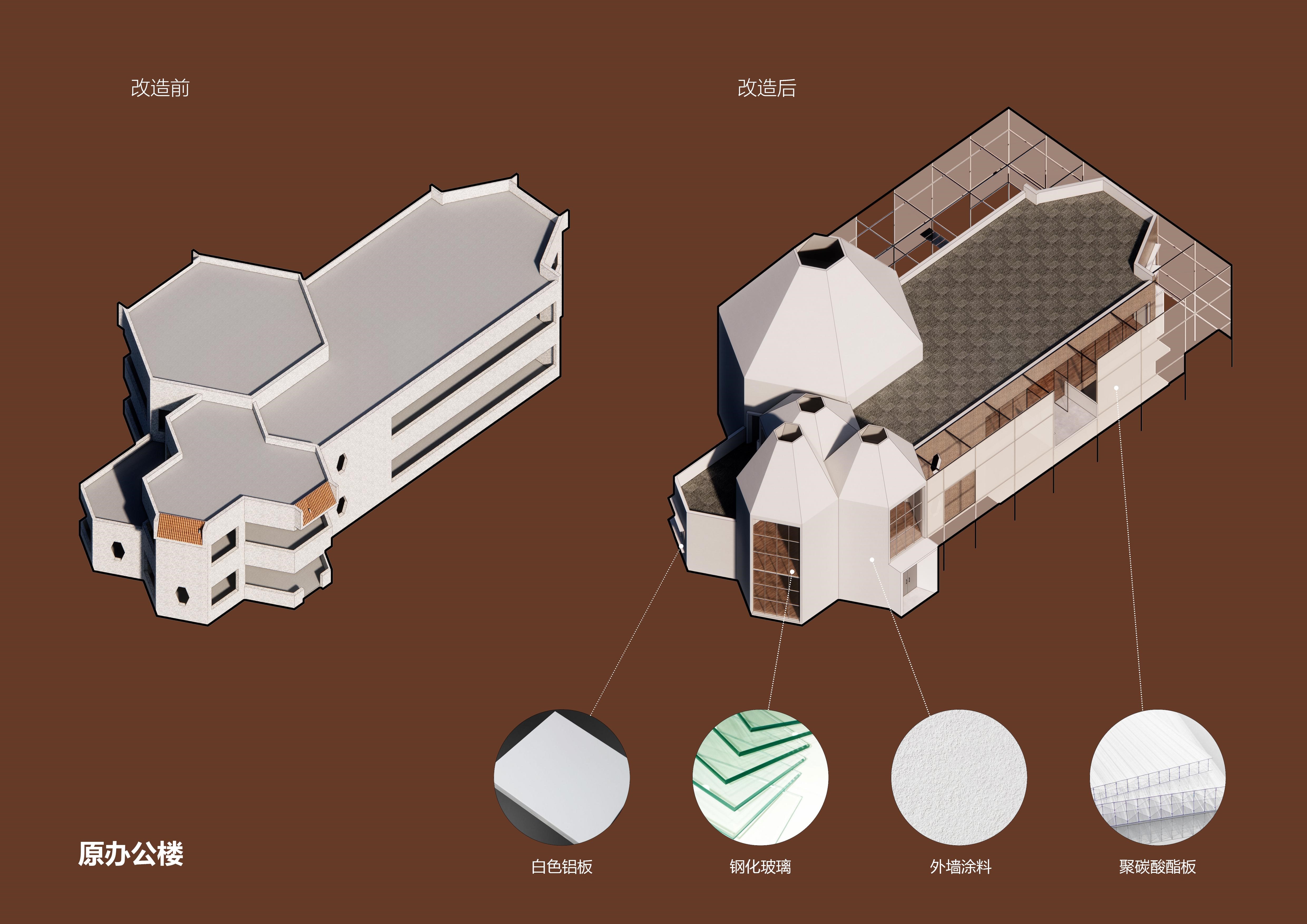
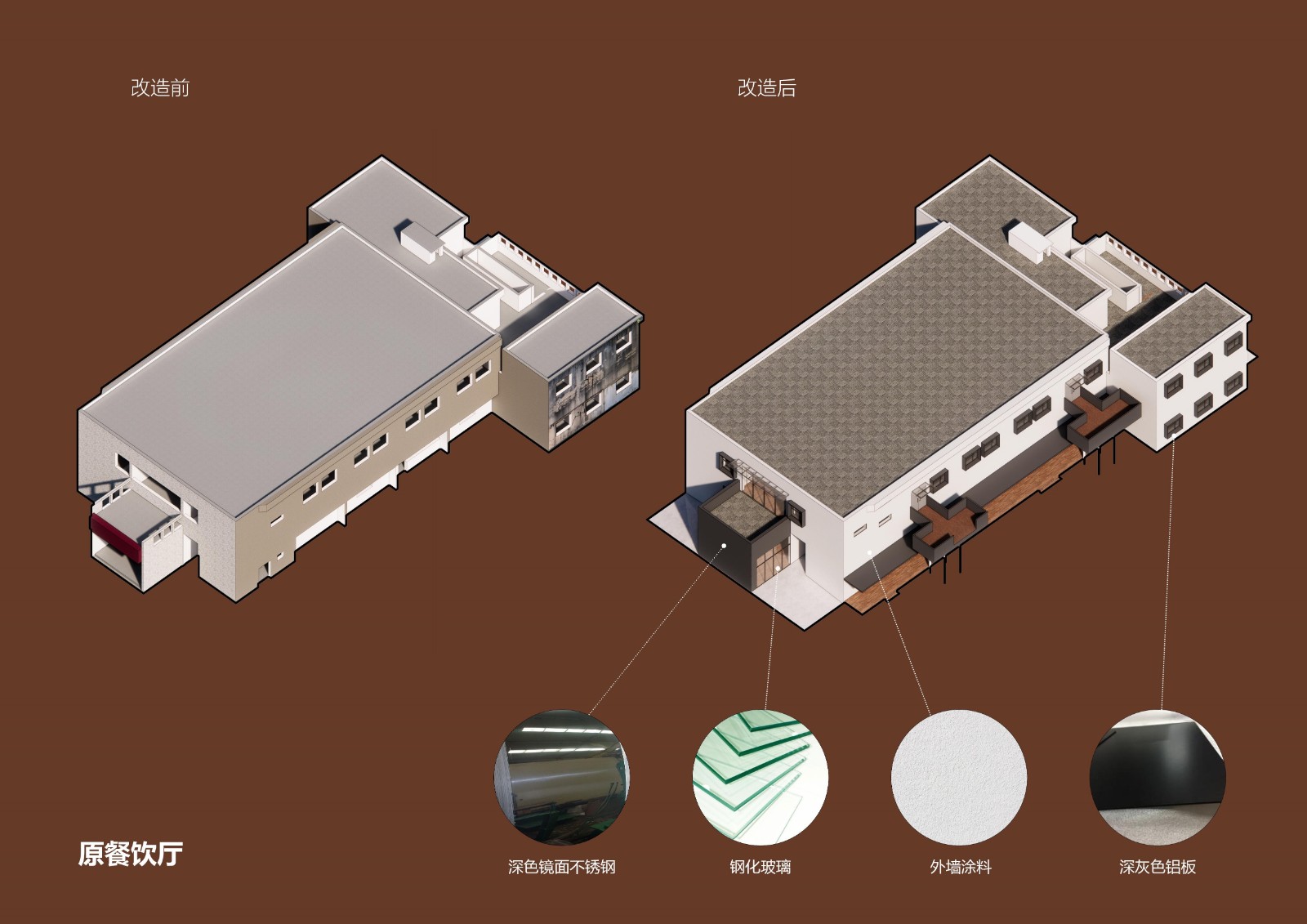
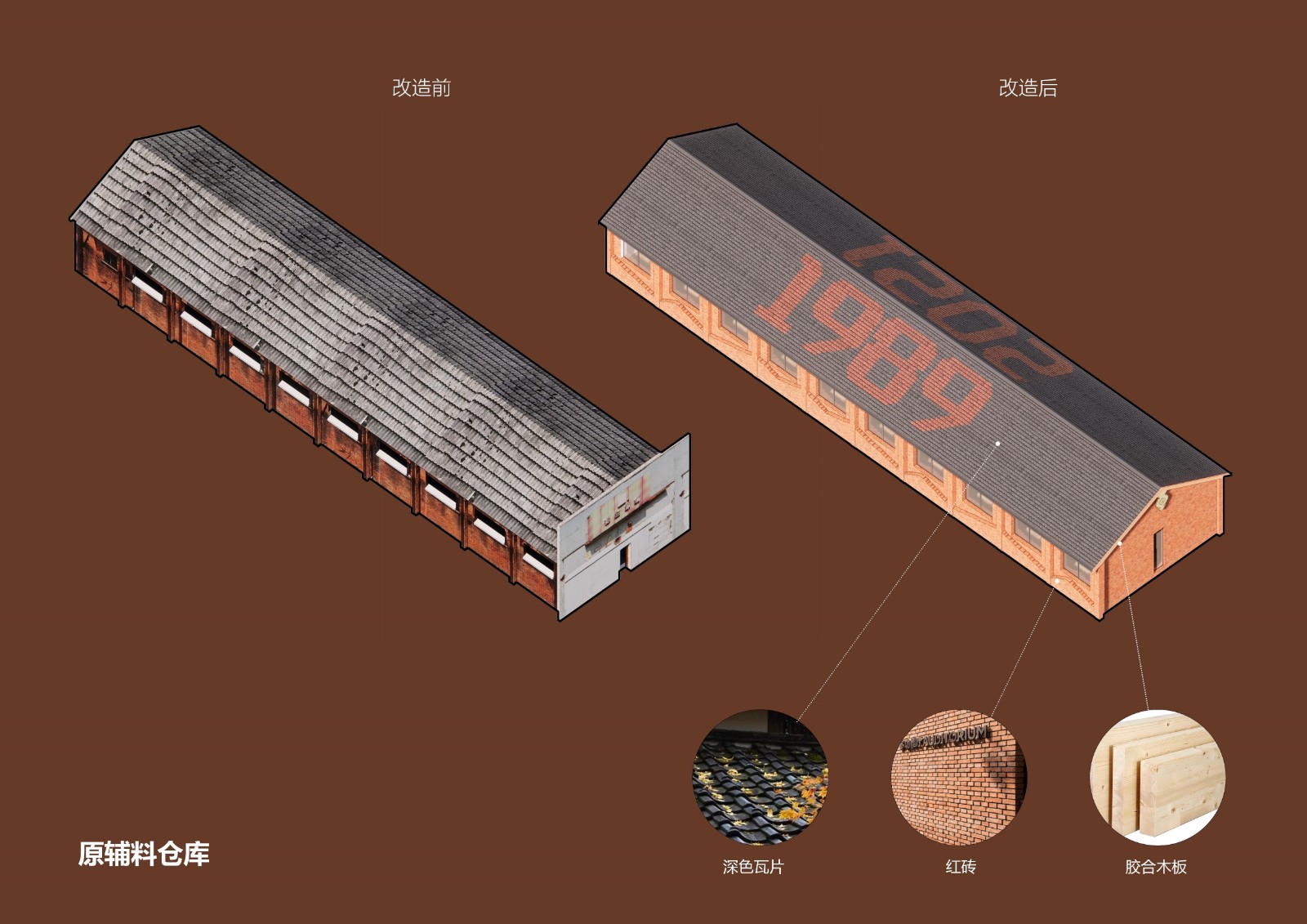
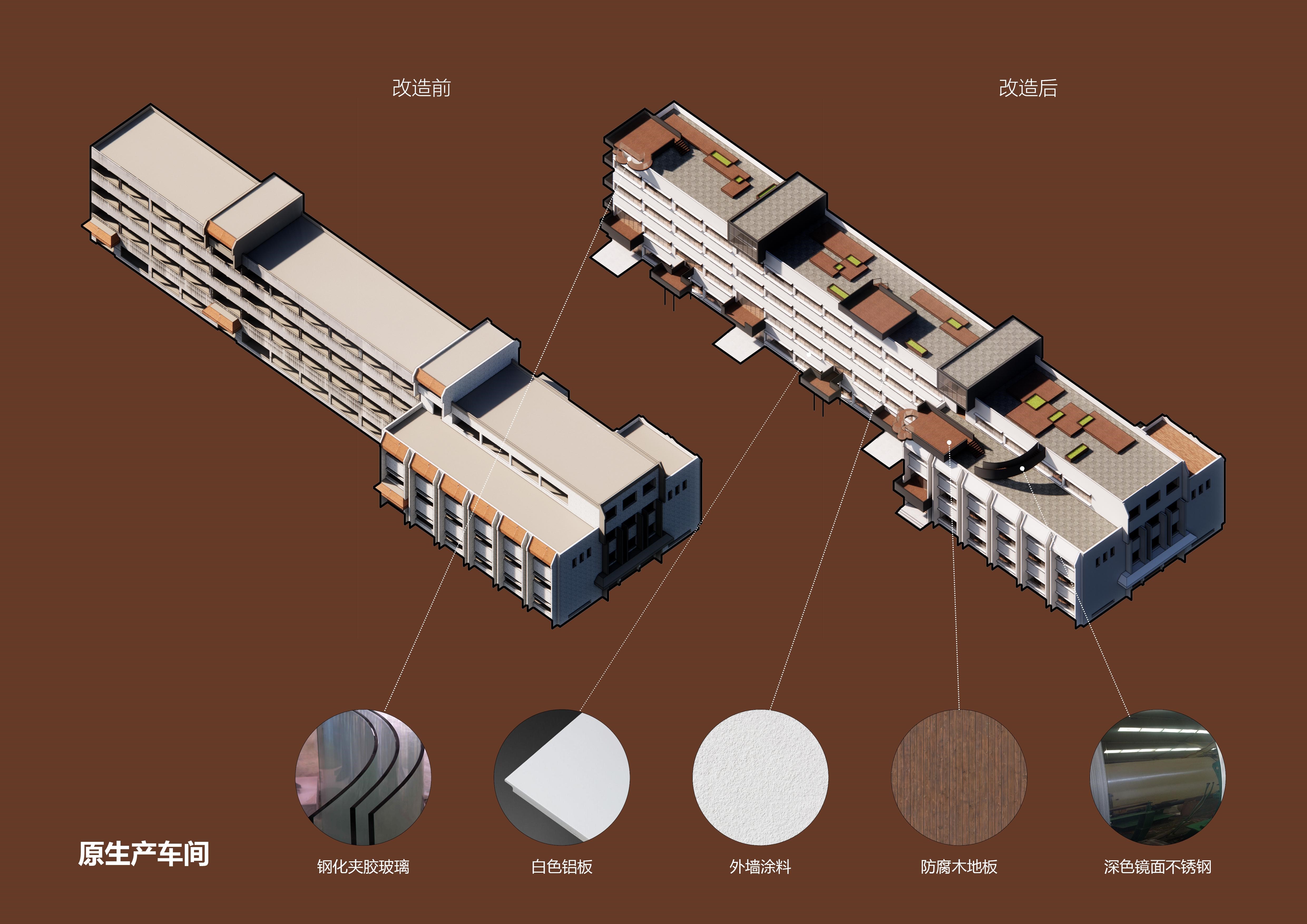
▼一層平面圖
Floor Plan - Level 1n
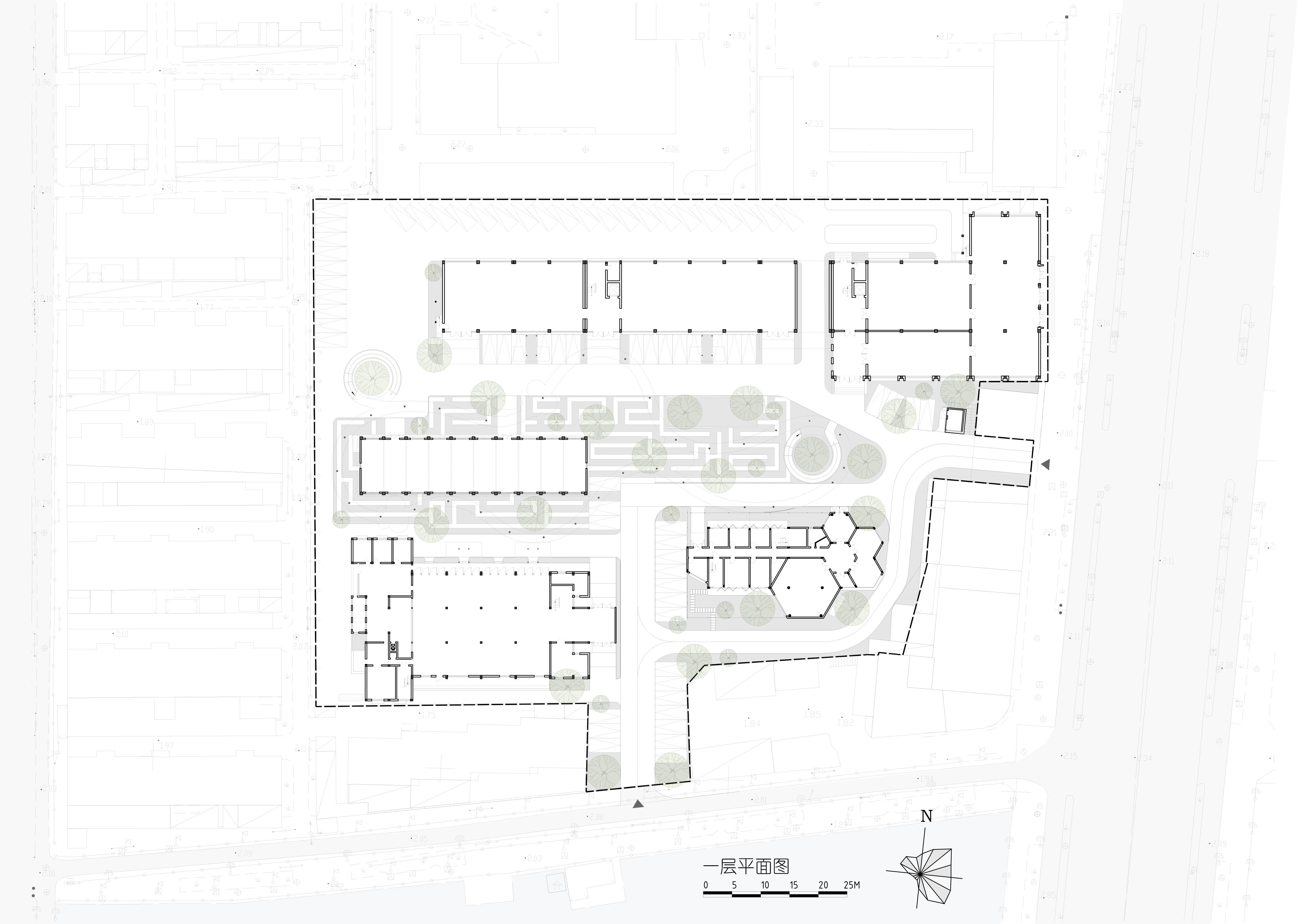
▼二層平面圖
Floor Plan - Level 2
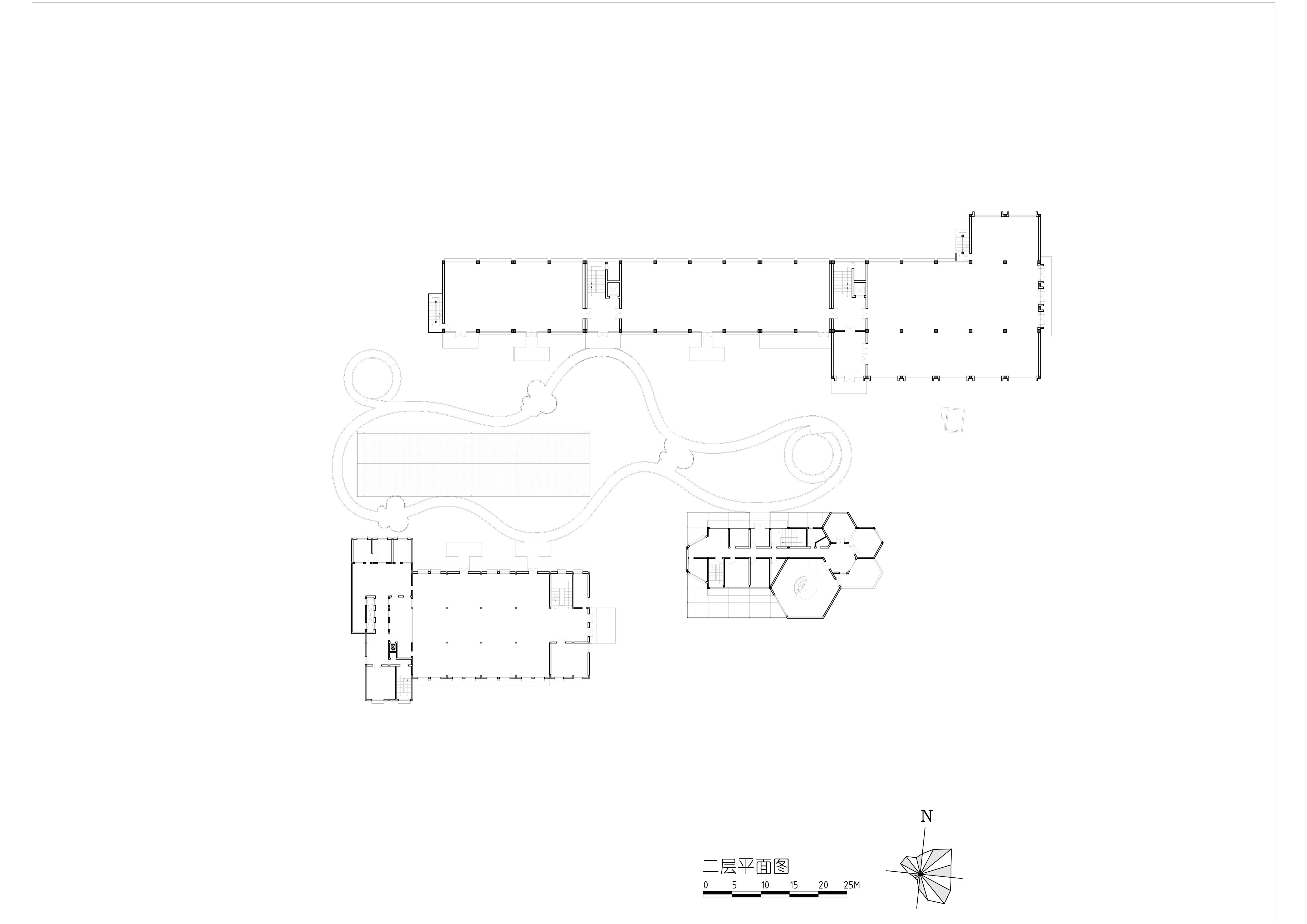
▼三層平面圖
Floor Plan - Level 3
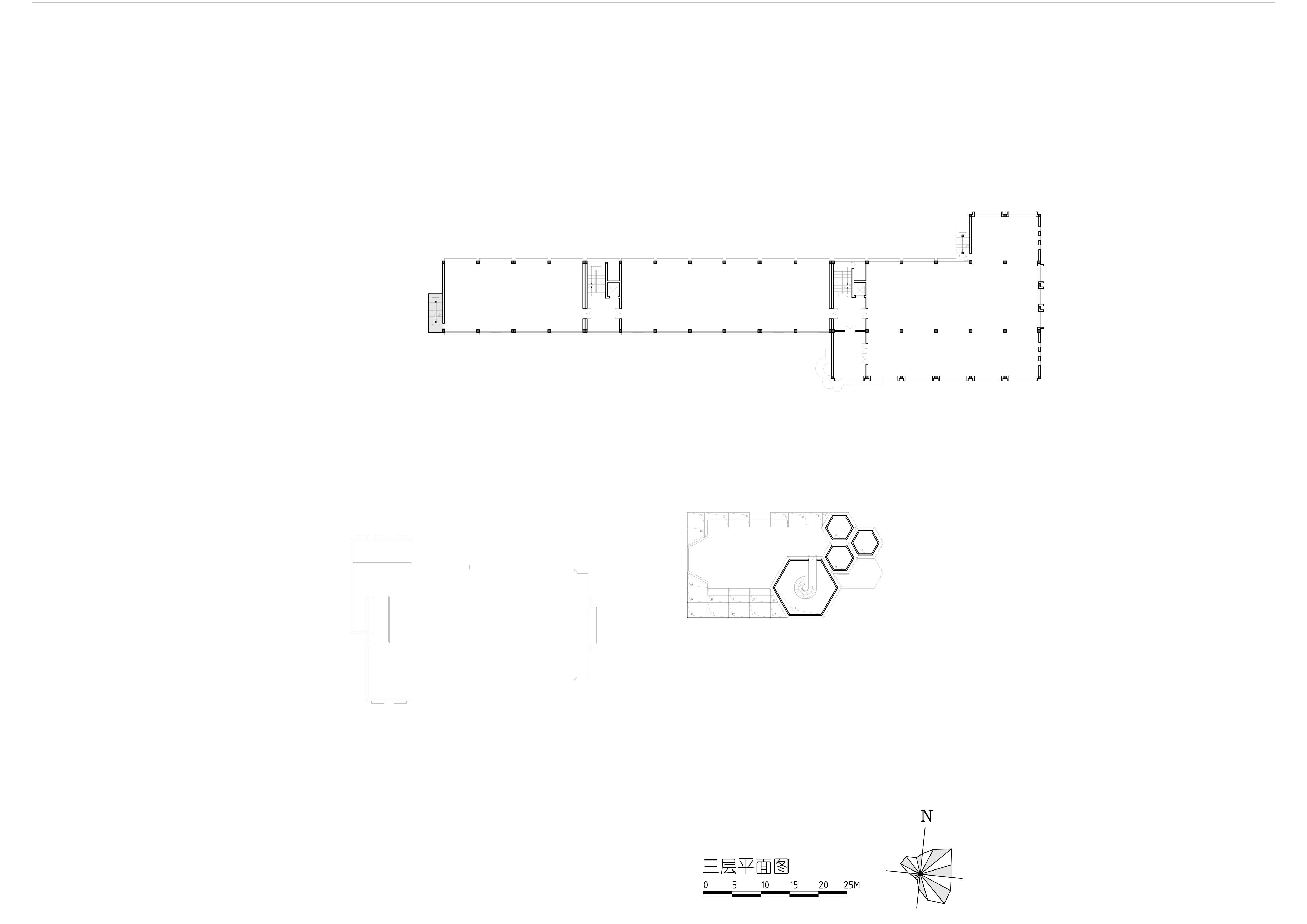
▼四層平面圖
Floor Plan - Level 4
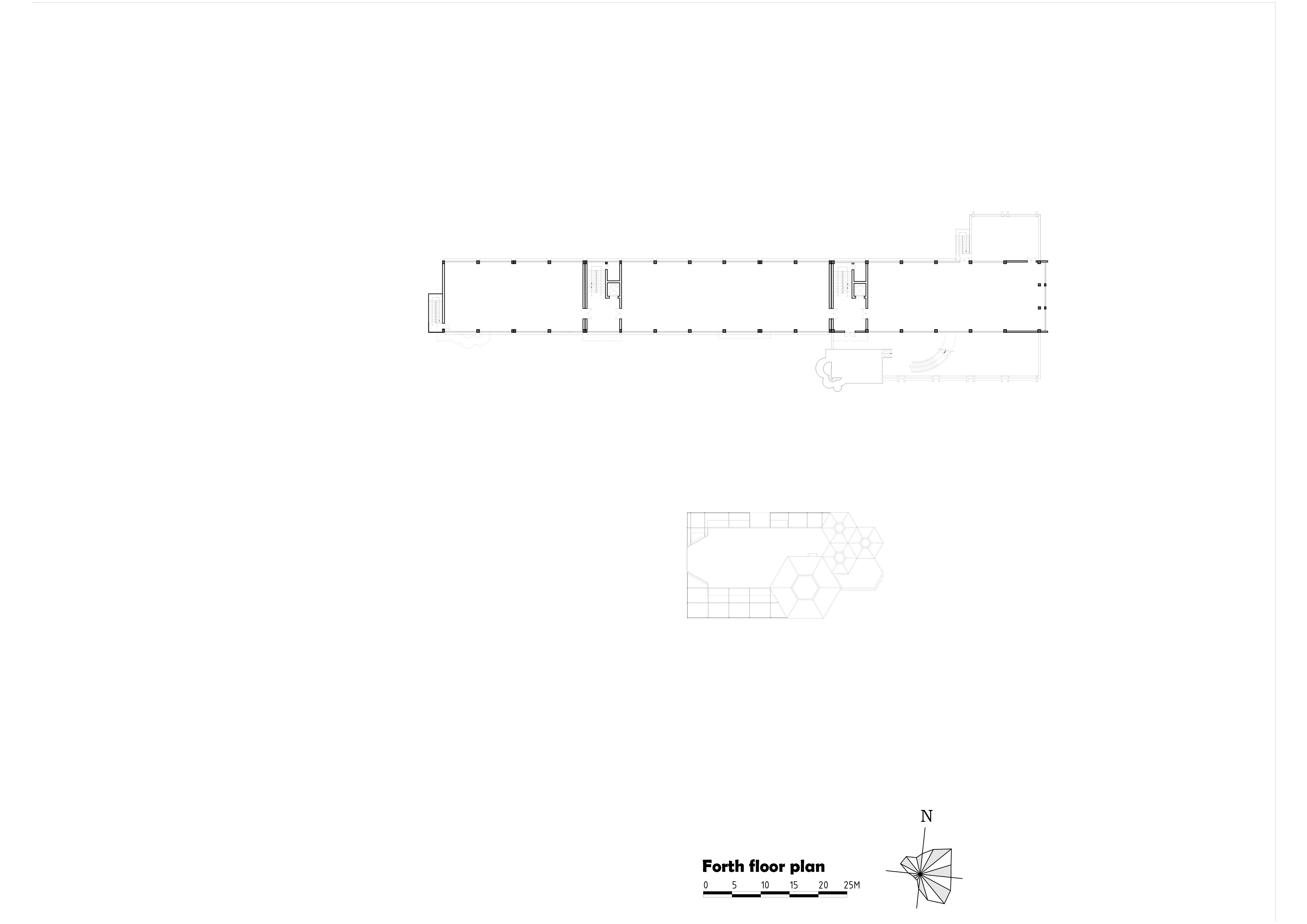
項(xiàng)目信息
項(xiàng)目位置:江蘇省常熟
面積: 9726 m2
項(xiàng)目年份: 2021
攝影師: 吳清山 盧志剛
主持建筑師:盧志剛 設(shè)計(jì)團(tuán)隊(duì):黃聰毅����、劉志睿、趙瑞雪����、劉暢
結(jié)構(gòu)顧問(wèn): 蘇州安省建筑設(shè)計(jì)有限公司
業(yè)主: 江蘇江南商貿(mào)集團(tuán)有限公司
Architects: Minax Architects
Area: 9726 m2
Year: 2021
Photographs: Wu Qinshan ,Lu Zhigang Lead Architect: Lu Zhigang, Project Team: Huang Congyi, Liu Zhirui, Zhao Ruixue, Liu Chang
Construction:Suzhou Ansheng Construction Design Consulting Co., Ltd.
City:Changshu
Country:China
版權(quán)聲明:本文版權(quán)歸原作者所有�,請(qǐng)勿以景觀中國(guó)編輯版本轉(zhuǎn)載���。如有侵犯您的權(quán)益請(qǐng)及時(shí)聯(lián)系���,我們將第一時(shí)間刪除。
投稿郵箱:info@landscape.cn
項(xiàng)目咨詢:18510568018(微信同號(hào))
 京公海網(wǎng)安備 110108000058號(hào)
京公海網(wǎng)安備 110108000058號(hào)

















































